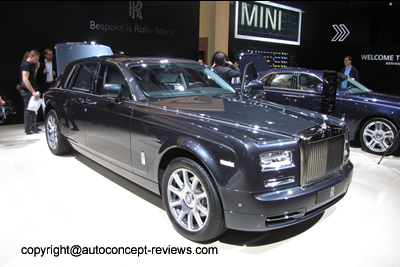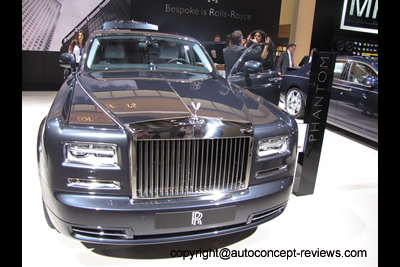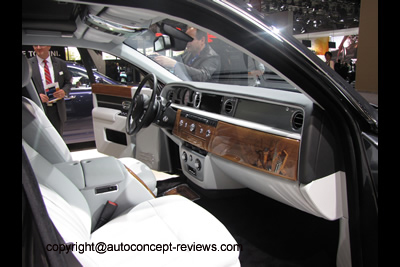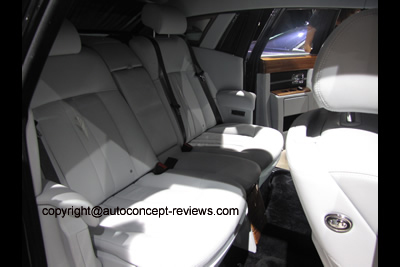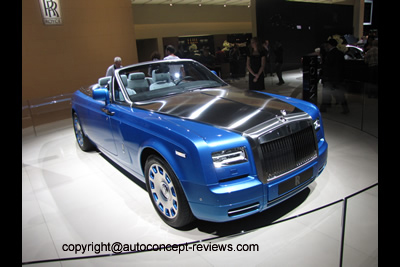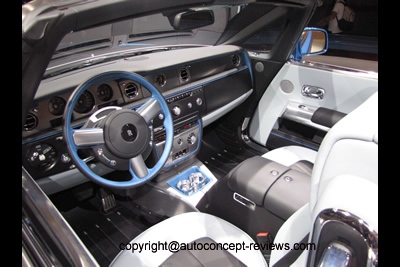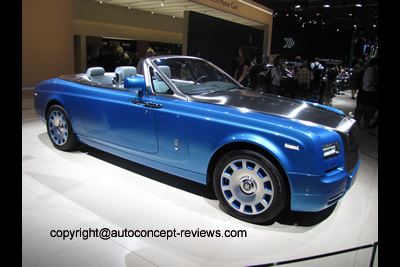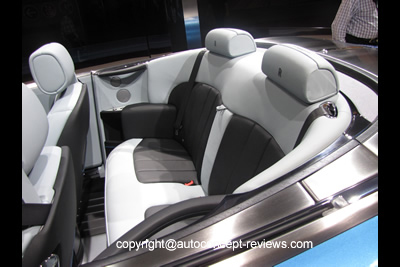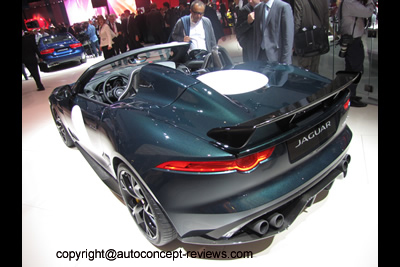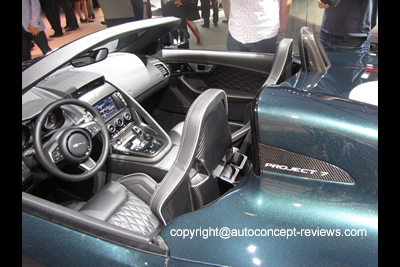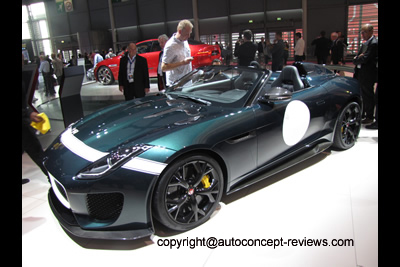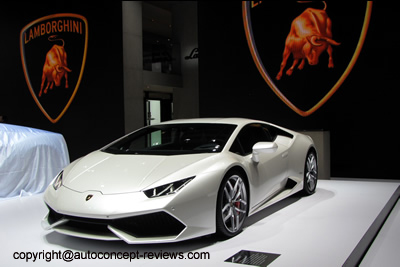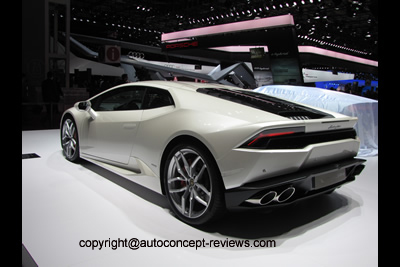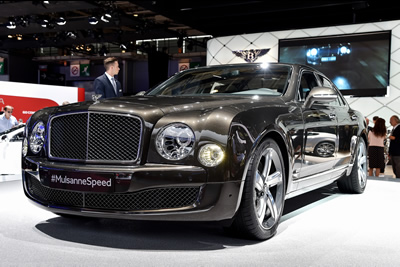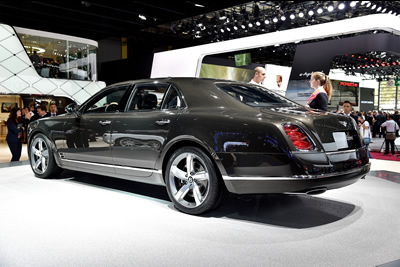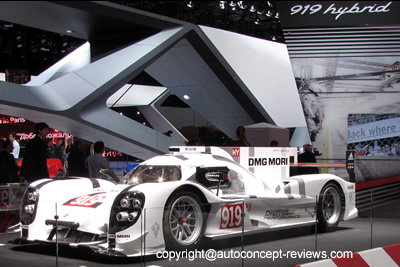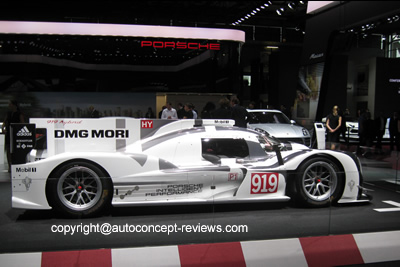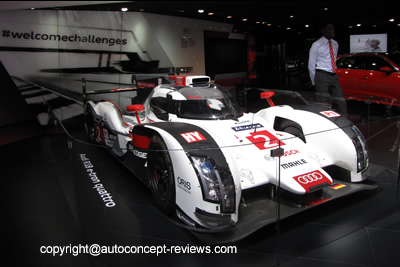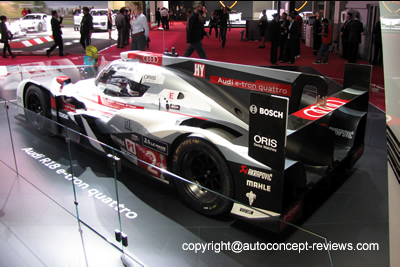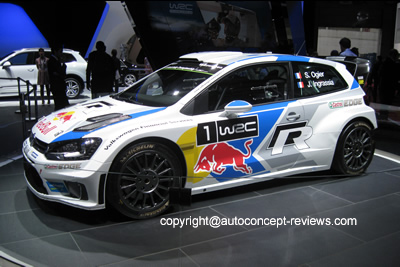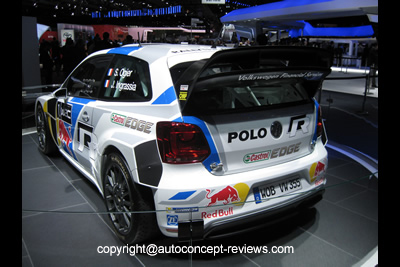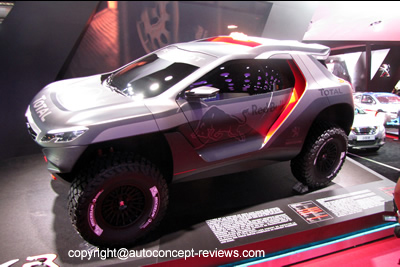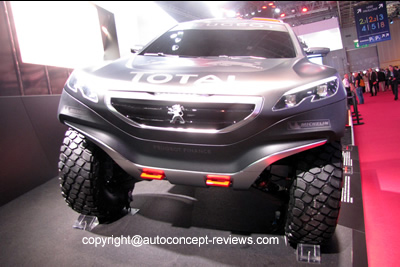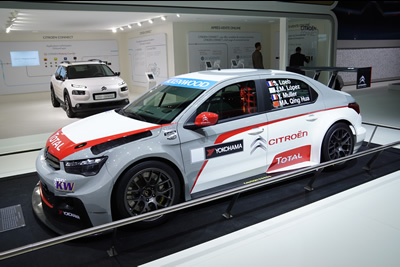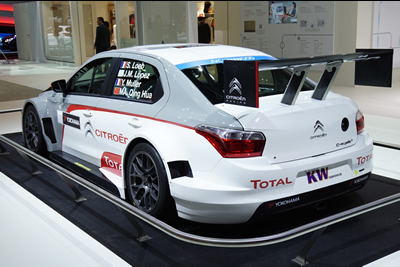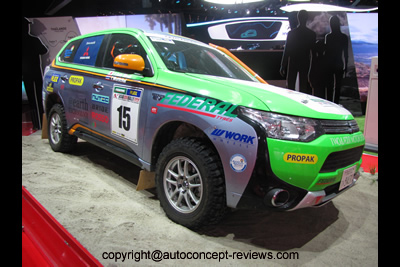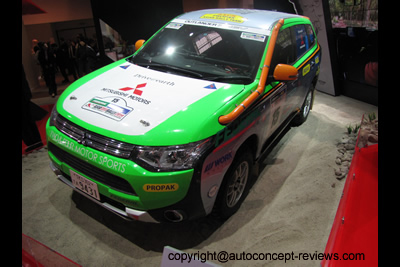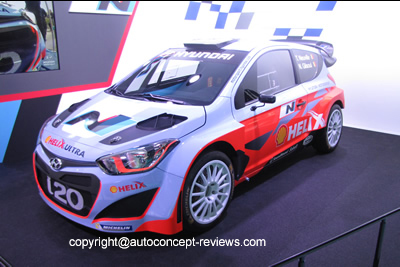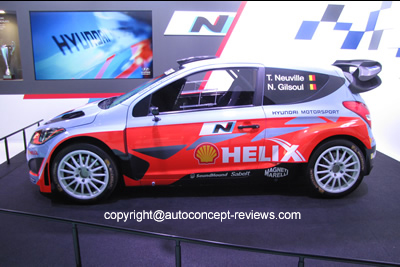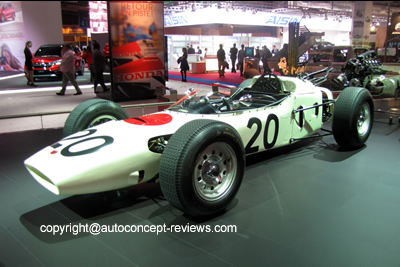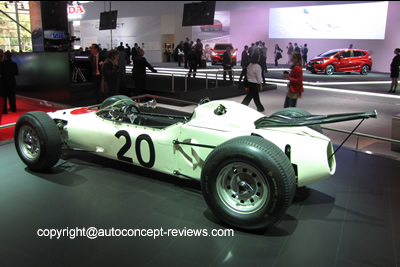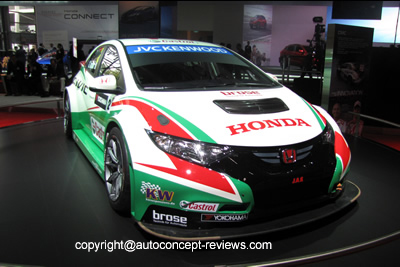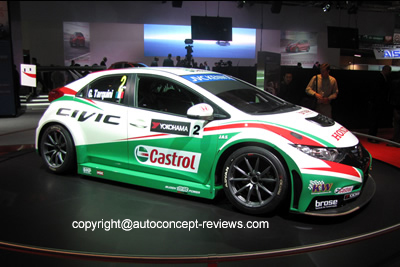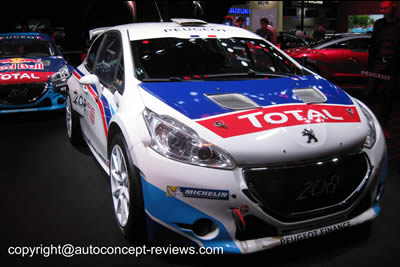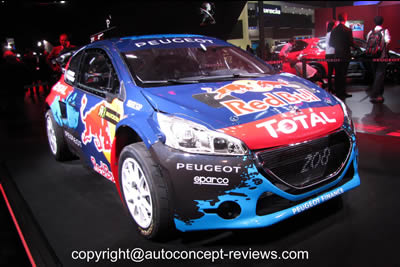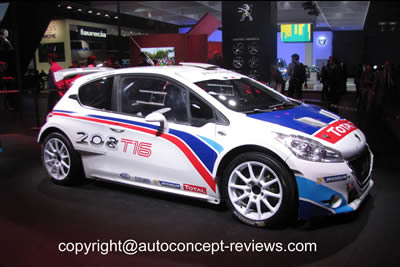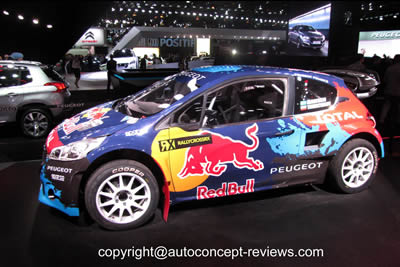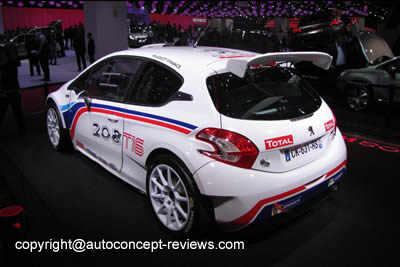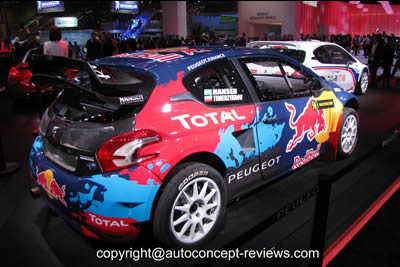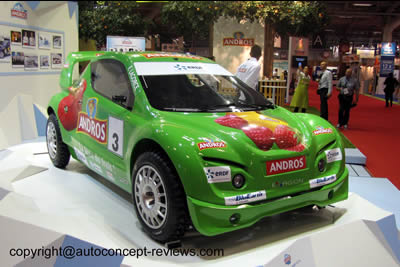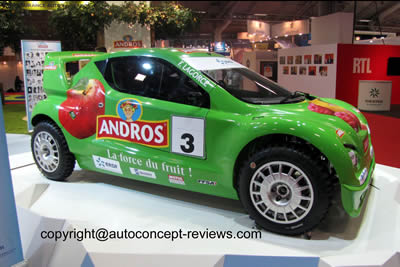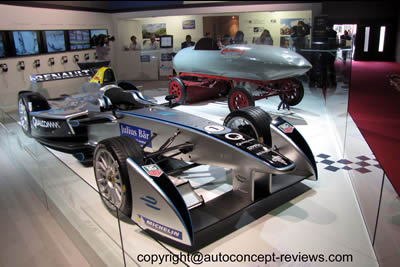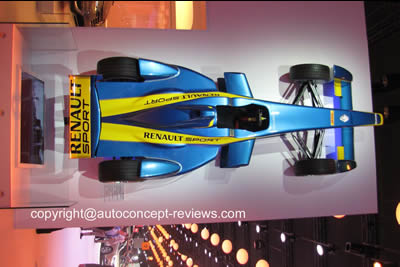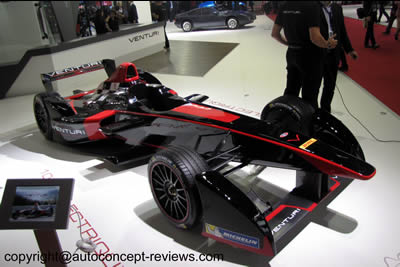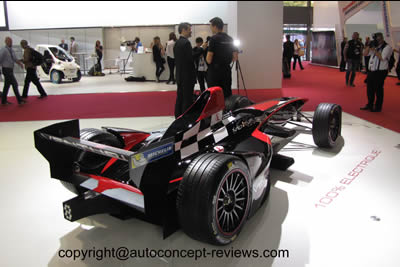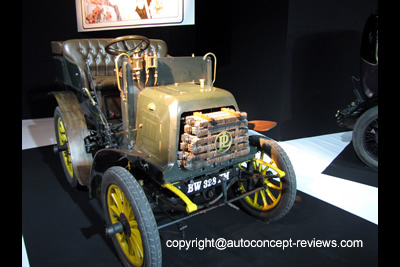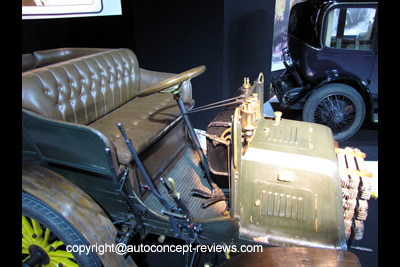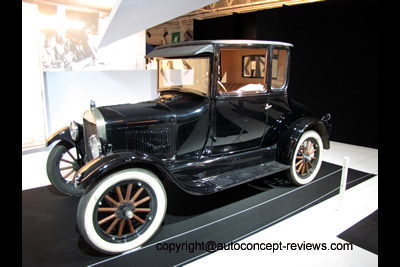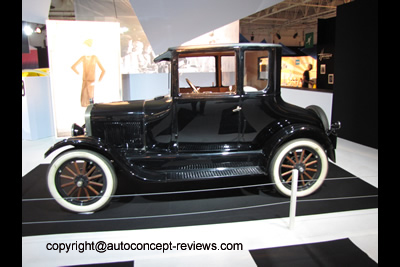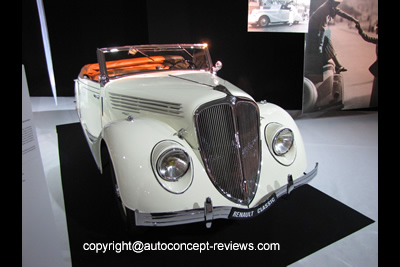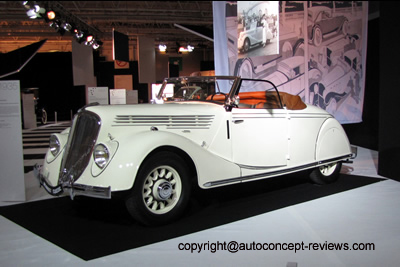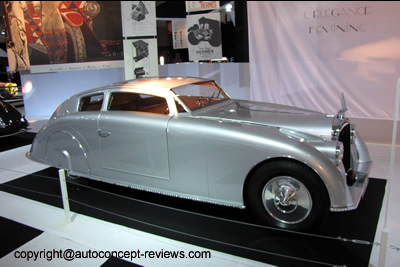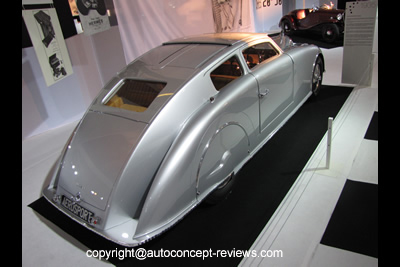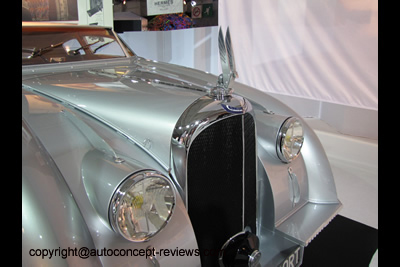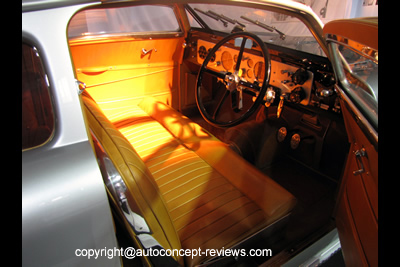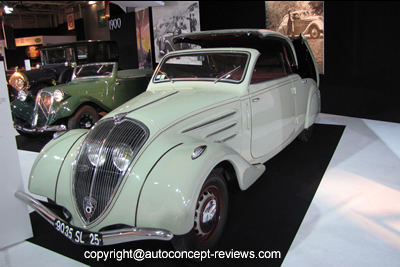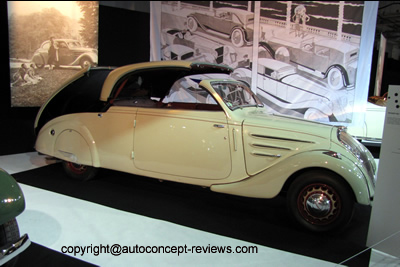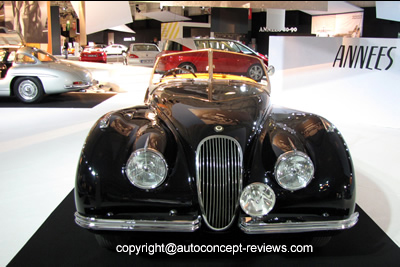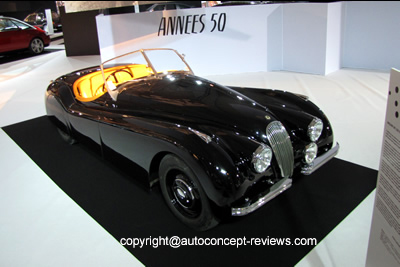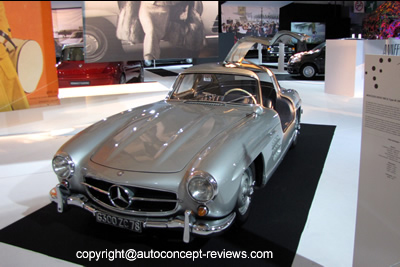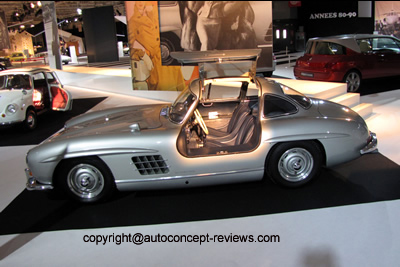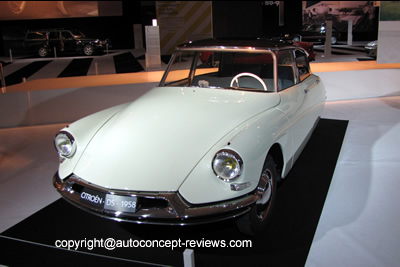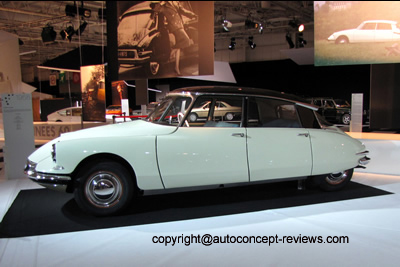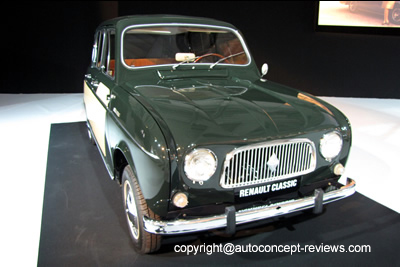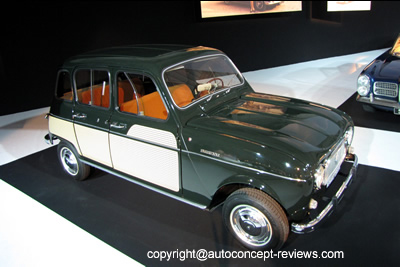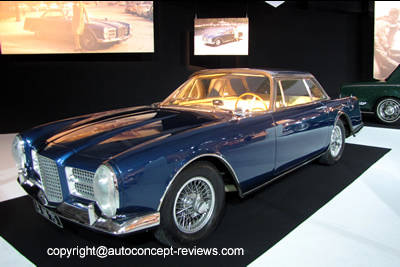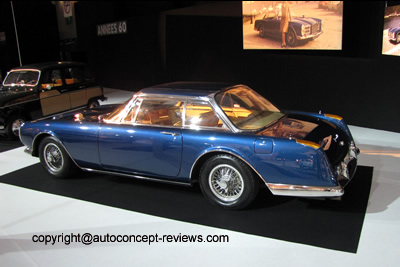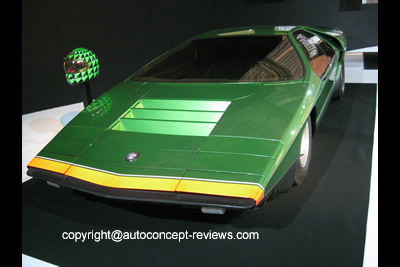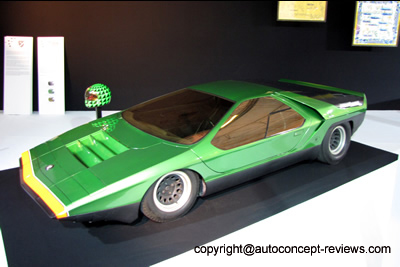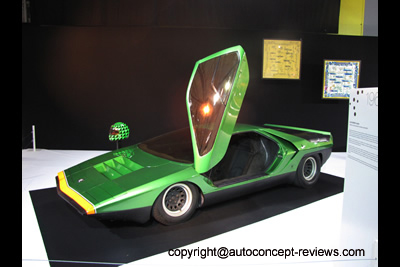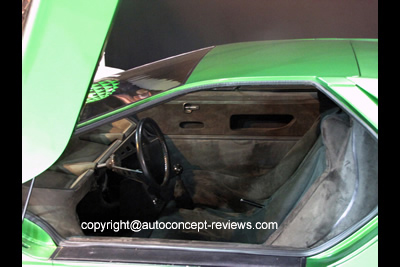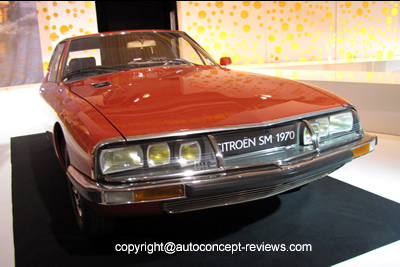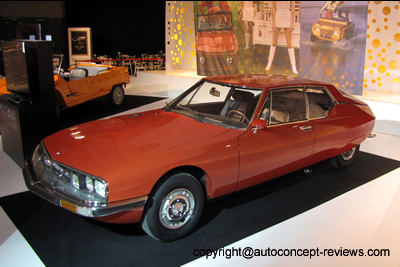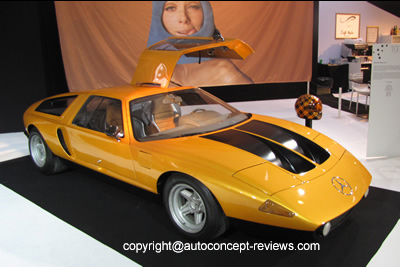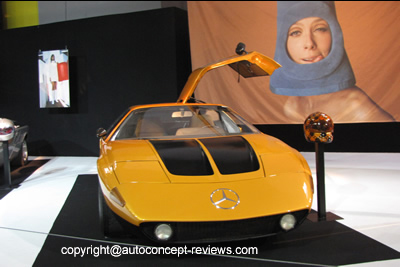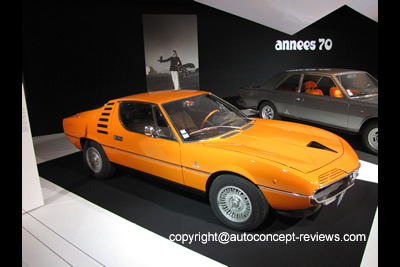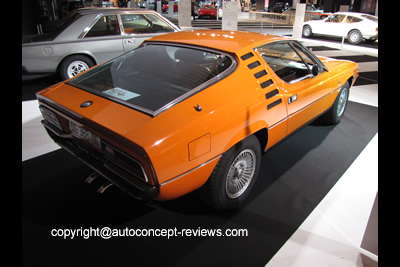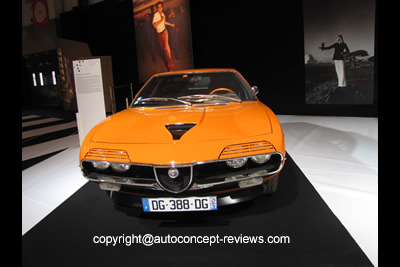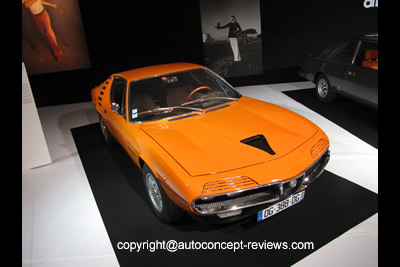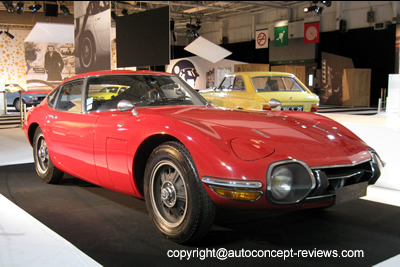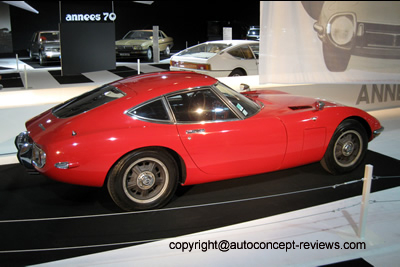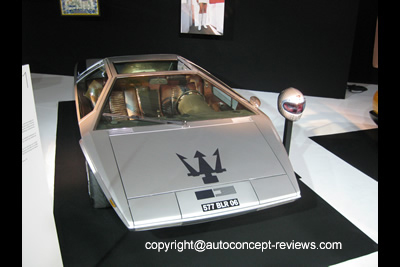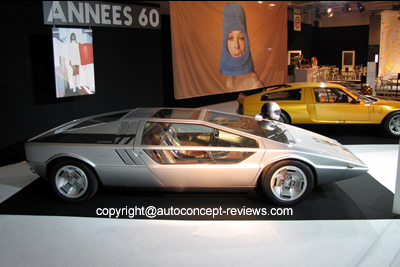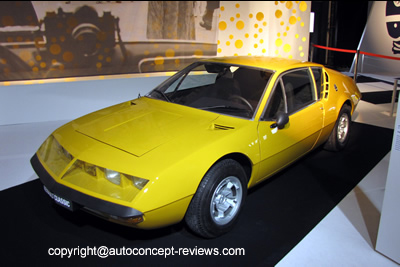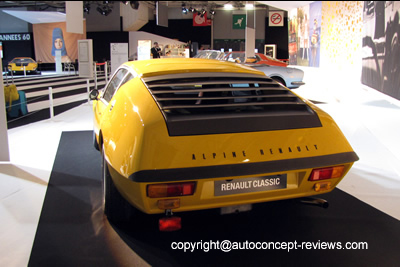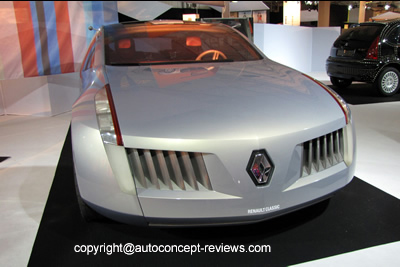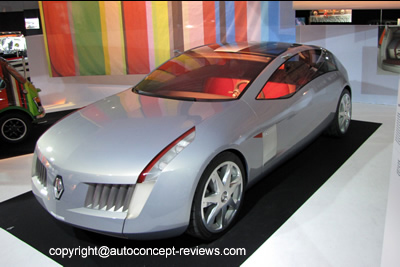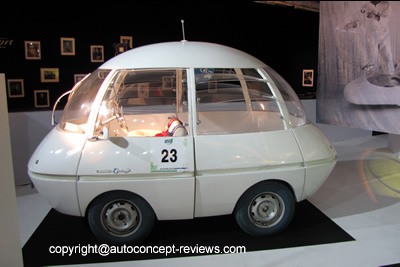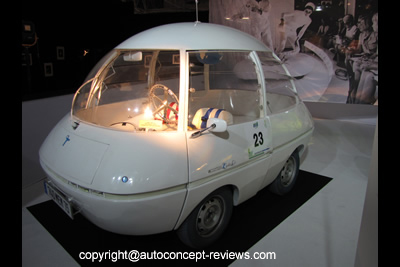- Paris, Mondial de l'Automobile 2014 - |
Paris 2014 Mondial de l’Automobile - Concept Cars and Hybrid Vehicles all over
The Paris Mondial de l’Automobile 2014 gathered 1 253 513 visitors and can be considered as the most frequented Motor Show. It proposed a large selection of World Premieres and Concept Cars illustrating future trends. Battery electric cars were few this time but now hybrid propulsion is widely proposed especially in premium vehicles.
We are introducing here some relevant concept cars and prototypes and a selection of new exclusive automobiles. The exhibit 4 "Automobile and Fashion" is an opportunity to introduce some antique and classic cars.
-
-
-
-
1. Concept Cars and Prototypes
|
| 1. Lamborghini Asterion Hybrid Prototype |
Automobili Lamborghini unveils its first plug-in hybrid (PHEV) technology demonstrator, the Lamborghini Asterion LPI 910-4, making its world debut at the 2014 Paris Mondial de l’Automobile. Clearly a
Lamborghini, Asterion is a conceptual car housing a plug-in hybrid powertrain designed to Lamborghini objectives: The Asterion defines a solution to significantly reducing CO 2 emissions through technologies available today, guaranteeing the unique Lamborghini driving feel with a smooth and reactive driveability and with superior power, including an exceptional pure electric range of 50 km... Review continues here |
| |
| |
2. Infiniti Q80 Inspiration Concept |
“The Q80 Inspiration concept was born to disrupt the premium saloon category,” said Francois Bancon, Infiniti Vice President, Product Strategy. “We aim to do this with elegance, style, and emotion.
“Q80 Inspiration is how we see the future in terms of moving people in the higher end of our portfolio. This car is making a statement. Q80 Inspiration is a precursor of a production model in this segment and, as such, integral to our future.”... Review continues here |
|
| |
3. Volkswagen XL Sport |
Pioneering aerodynamics. The Ducati 1199 Superleggera has the best power-to-weight ratio of any production motorcycle in history. In the world of the motor car, the XL Sport achieves something similar. In this case it is the ratio between weight (890 kg), power (147 kW / 200 PS) and aerodynamics (cd x A = 0.44 m2) that currently makes this concept car the fastest 200 PS car in the world. No other sports car has ever reached a top speed of 270 km/h with 200 PS. One stand-out feature in this is the vehicle's aerodynamics. As indicated above, the coefficient of the drag coefficient (0.258) and the vehicle's frontal area (1.7 m2) is 0.44 m2... Review continues here
|
| |
4. Peugeot Quartz |
PEUGEOT has been building on its lead in the crossover market since 2009. With the Quartz
concept, it has unveiled a new vision for the segment, blending the heightened expression of a
next-generation SUV with the punch of its more high-performance models. There is an original athletic air about both the exterior and the cabin, both of which boast an
outstanding design and innovative materials, featuring basalt, digitally woven fabric and chiné
leather.... Review continues here
|
| |
5. Toyota C HR Hybrid SUV Concept
|
20 years ago, the company created a new market segment with its pioneering and ingenious RAV4. Fundamentally different to a traditional 4x4, the RAV4 featured a small, 2.0 litre engine mounted transversally within a monocoque bodyshell, and all-round independent suspension in a very compact body (just 3.69 m long), all this packaged in an aspirational and progressive design.
Launched in Japan in 1997 and in Europe in 2000, the Prius was the world’s first mass-produced full hybrid vehicle. It featured a unique Toyota Hybrid System which established a major industry milestone in vehicle powertrain development and set new standards for quiet, ecologically-responsible driving pleasure.... Review continues here
|
| |
6. Renault Eolab Plug-in Hybrid Concept 2 Litre per 100 km (141 mpg) |
Renault presents EOLAB, a new prototype which explores ways to deliver ultra-low fuel consumption. It boasts NEDC combined cycle consumption* of 1 litre/100km (235 mpg U.S.), equivalent to 22g of CO2/km. To achieve such low figures, the designers focused their efforts on three main areas: minimising weight, refining aerodynamics and using “Z.E. Hybrid” technology for all, a brand new initiative which permits zero emissions* motoring during everyday use. As an innovative showcase with an environmental core, the Renault EOLAB includes a very high number of technological advances that are destined to be carried over gradually to vehicles available in the showroom. As a consequence, the Renault EOLAB underlines the undertaking of Renault – already a pioneer in the field of zero-emission mobility** thanks to its range of electric vehicles – to take even greater steps to produce affordable models that have an increasingly smaller carbon footprint.... Review continues here
|
7. Maserati Alfieri Concept
|
Maserati 100th Year Anniversary
Maserati unveiled the Alfieri, a 2+2 concept car to celebrate the brand’s centenary at the Geneva Palexpo today. The Alfieri is an exciting but realistic and 100% functional prototype that says much about the design DNA of future Maseratis. In fact, the Maserati Alfieri could well be a door to the future of Maserati.
The striking new concept bears the name of Alfieri, the most prominent of the Maserati brothers, and the engineering genius who founded “Officine Alfieri Maserati” in Bologna a century ago. The Maserati Alfieri was created at the Maserati Centro Stile in Turin by a small group of talented young designers led by Marco Tencone. The project was masterminded by Lorenzo Ramaciotti.... Review continues here
|
| |
8. Hyundai Intrado Hydrogen Fuel Cell Concept |
At the 2014 Geneva Motor Show Hyundai Motor has unveiled its new concept car, the Hyundai Intrado Hydrogen Fuel Cell Electric Concept 2014, to a global audience for the first time.
Hyundai Intrado signifies a new direction for Hyundai, and is a vision of how cars will meet future mobility needs. Far more than a styling exercise, Intrado demonstrates Hyundai’s belief that advanced vehicle technologies and intelligent design can combine to engage more effectively with driver and passengers.... Review continues here
|
| |
9. DS Divine Concept |
The DIVINE DS concept represents a manifesto of style that embodies the essence of the brand and its future.
A four-door compact car, it features sleek, powerful styling accentuated with striking graphic signatures. Along with a distinctive exterior, DIVINE DS has a totally original interior that reflects the avant-garde spirit and sophistication of the brand. For this concept car, the design teams were given the freedom to fully express their creativity, which has resulted in a new philosophy for personalisation named ‘hyper-typage’. This approach offers three interchangeable interior trims, each with a unique and compelling character. DIVINE DS underlines the brand’s aim of offering customers cars that directly reflect their personalities ... Review continues here
|
| |
| |
10. Peugeot Exalt Concept |
The PEUGEOT EXALT appears in a different guise to the version unveiled at the Beijng Motor Show in April. As with the previous model, the Paris Motor Show incarnation of EXALT is a premium car that employs locally sourced and recycled materials. A new finish uses ‘Newspaper Wood’ that’s created from the pages of the business dailies. Paying homage to the art of the French car industry from the twenties and thirties, its bodywork is hand-formed by a master panel beater. The rear is trimmed in a textile known as ‘Shark Skin’, which is highlighted by a clear line that creates a sophisticated tone-on-tone transition between the bare steel and the grey of the textile.
Demonstrating a vision of future integrated transport, the boot’s low load sill gives easy access to the HYbrid-Kick concept, a foldaway electric scooter stowed below the boot floor. This is a joint project between PEUGEOT and MICRO to create a scooter that is easy to ride, fold and transport, the hallmark of simplicity and sophistication
With EXALT, PEUGEOT continues to build on the imposing vision of large-saloon initiated with the ONYX Concept in 2012. A vision embodied by materials that achieve a blend of balance, local sourcing, recycling-based production and more.
This new automotive experience is powered by a petrol-electric HYbrid4 drivetrain with a combined output of 340hp.
“PEUGEOT’s 125-year automobile history is punctuated by models that made a mark ontheir era. With the EXALT Concept, the Brand has reasserted its position and opened a newchapter. We are moving forward, resolutely, with confidence.”
Maxime Picat, PEUGEOT Brand Chief Executive Officer
With its sleek, athletic lines, EXALT embodies all the power of PEUGEOT design. Sitting on wide tracks with powerfully rounded wheel arches, the five-door saloon expresses its style over a length of 4.70m, combining flat surfaces and straight-cut lines to strike the perfect balance between aggressiveness and softness. EXALT is unashamedly radical, stripped of any superfluous materials to retain only what is necessary. All materials have been carefully selected with an eye to efficiency.
“The PEUGEOT EXALT is athletic, powerful and sleek, sporting an array of originalmaterials. Its cabin, trimmed in natural materials, is dedicated to comfort and instinctivedriving. This innovative concept makes the saloon even more attractive and more versatile,in particular the tailgate, with its unique opening mechanism and large boot.”
Pierre Paul Mattei, PEUGEOT EXALT Styling Manager
|
|
11. Nissan IDx Freeflow and Nismo Concept |
NISSAN IDx FREEFLOW AND IDx NISMO CONCEPTS are a Demonstration of How Co-Creation Can Challenge the Conventions of Car Design. First unveiled at the 2013 Tokyo Motor Show, the NISSAN IDx FREEFLOW AND IDx NISMO CONCEPTS are entering a Motor Show exhibits in North America that started at Detroit NAIAS in January 2014.
The way people are buying cars is changing. A choice of colors and matching wheels is no longer enough. In a society where cars are purchased as a reflection – and enabler – of a driver's lifestyle, the way future models are designed needs to be revolutionized. ... Review continues here
|
| |
12. MINI Vision Superleggera Concept |
Munich/Cernobbio, May 2014. The BMW Group celebrates the meeting of the time-honoured and the contemporary at the Concorso d’Eleganza Villa d’Este 2014 with a very special concept: the MINI Superleggera™ Vision. This exclusive interpretation of an open-top two-seater was created by MINI and Touring Superleggera, the tradition-steeped design and coach building house based in Milan. The MINI Superleggera™ Vision is on the one hand a classic roadster, a compact and agile two-seater, expressing the most minimalist and emotional style of motoring; and on the other hand its electric drivetrain gives the car distinctly modern driving dynamics. In collaboration with MINI, Touring Superleggera™ has designed and built an elaborately crafted, unique model which blends the tradition of classic coachwork construction with the MINI’s authentic British styling to create timeless aesthetic appeal.... Review continues here
|
| |
13. Mitsubishi Outlander Plug in Hybrid Concept S |
The Outlander PHEV Concept-S is a concept model presenting a special design package for the production Outlander PHEV. The exterior and interior design are created under "Sporty and Sophisticated" design theme. The design expresses driving pleasure by delivering powerful and agile driving performance as well as quiet, advanced and high quality driving performance provided by its Twin Motor 4WD and Plug-in Hybrid EV System.
Meant to symbolise the functionality and reassuring safety inherent to Mitsubishi Motors’ SUVs, the front end design shields the Three-Diamond mark with bold chromed accent mouldings on either side – a three dimensional effect – in a further suggestion of motion. Wraparound headlamps contribute themselves to a sense of dynamism sweeping gently up and outwards.
This “protective theme” continues at the rear where similar symbolic chrome accents – topped by elongated combination lamps – run from tailgate to wings meant to express dynamic and innovative styling as if bracing the vehicle for better safety. The body colour uses a brilliant “Platinum White” with glass flake finish. ... Review continues here
|
| |
14. Audi TT Sportback Concept |
A speedy sports car with four seats and five doors – Audi is presenting the TT Sportback concept at the Paris Motor Show. The exterior of the show car invokes the design idiom of the classic TT*, developing it into a new, elongated sculpture. It is driven by a high-powered 2.0 TFSI engine that delivers 294 kW (400 hp).
“With the TT, Audi created one of the automotive design icons of the last 20 years,” says Prof. Dr. Ulrich Hackenberg, Audi Board Member for Technical Development. “In the years since, we have designed our sporty and elegant five‑door Audi A5 Sportback* and Audi A7 Sportback*. In our Audi TT Sportback concept show car, we are now fusing both concepts to form a new member of a potential TT family.”
The Audi TT Sportback concept captivates with the power of 294 kW (400 hp) that flows through a seven-speed S tronic to the quattro permanent all‑wheel drive. The sprint from 0 to 100 km/h (62.1 mph) takes just 3.9 seconds. The high-performance engine limits fuel consumption to an average of 7.0 liters per 100 kilometers (33.6 US mpg). This equates to CO2 emissions of 162 grams per kilometer (260.7 g/mi).The sophisticated suspension and the low center of gravity ensure dynamic handling, and the body integrates a number of lightweight aluminum components. A laser spot that complements the LED high beam is featured in each of the headlights – this innovation from Audi significantly boosts safety when driving in the dark.
The Audi virtual cockpit dominates the elegantly designed interior of the show car, with the 12.3‑inch screen replacing the conventional instruments and the MMI monitor. The screen provides top-quality graphics and enables the driver to choose between multiple display levels. In the MMI terminal, the rotary push-button features a touchpad that is used to enter characters and gestures as with a smartphone. The operation of the climate control has been relocated to the air vents.
|
| |
15. Honda Civic Type R Concept |
At the Paris Motor Show 2014, Honda has released further details of the eagerly anticipated new Civic Type R.
The all-new hot hatch will be the most extreme and high-performing Type R in the 22 year history of the red ‘H’ badge, signalling the start of a new performance era for the brand.
Power will come from a 2.0-litre i-VTEC engine from Honda’s next-generation Earth Dreams Technology series. Producing more than 280 PS, it will deliver unmatched performance against any previous Type R, including all generations of the Civic, the iconic performance-oriented versions of the Integra, Accord and even the NSX.
While complying with strict Euro 6 emissions regulations, this is a Honda Type R powerplant like no other. With its predecessors naturally aspirated, the new unit benefits from a turbocharger, boosting low-end power delivery. Combined with the high-end performance synonymous with Honda’s VTEC technology – and much-loved by fanatical Type R owners – the new model promises to deliver a sensational driving experience.
Suehiro Hasshi, Large Project Leader for the Civic Type R at Honda R&D, comments: “Honda has had four Type R model derivatives – the Civic, Integra, Accord and NSX. The engine in this new Honda Civic Type R is unrivalled against all of them in terms of raw power, torque and engine response.”
Hasshi-san emphasised the car’s appeal will be far greater than just the new high-performance engine under the bonnet. A number of engineering innovations and enhancements will make the new Type R a true driver’s car, more than worthy of wearing the famous red ‘H’ badge.
The new Type R will mark the debut of the new ‘+R’ button, for example. Located to the side of the steering wheel, a press activates ‘+R‘ mode for the most exhilarating driving experience. Engine responsiveness is heightened, with torque-mapping changed to a more aggressive and performance-focused setting. Steering becomes more responsive which, together with the new four-point Adaptive Damper System, delivers the ultimate handling experience.
Hasshi explained: “In default standard mode, the Civic Type R is exceptionally agile, an everyday sports car with an enjoyable and fluid acceleration. The ‘+R’ button brings out a more dynamic and athletic car for the driver, sure to set pulses racing. The difference in character is immense. The ‘+R’ mode is extreme; the car is ideal for the track and will be appreciated by the genuine sports-driving enthusiast.”
Another example of Honda’s innovative approach is the car’s ‘steer axis’. In order to deliver the power of the turbocharged 2.0-litre i-VTEC engine, the new Type R’s front suspension system includes this additional mechanical system involving two supporting ‘kingpins’. These work to minimise torque steer, allowing the driver to fully exploit the Type R‘s exceptional driveability.
Furthermore, a new four-point Adaptive Damper System has been developed specifically for the new Type R, which automatically adjusts front and rear suspension damping force stiffness in a split second, to suit driving conditions. This allows the new Type R to provide a comfortable ride during cruising, yet become firm and agile for high-performance handling.
The new Type R will follow in the footsteps of its predecessors with a six-speed manual transmission, which the development team selected in order to maximise driving enjoyment.
Hasshi explains: “The manual transmission allows the driver to select their chosen gear, for example, down from fifth to third when approaching a corner. The concept of the new Civic Type R is to be the complete driver’s car so this was the best option.”
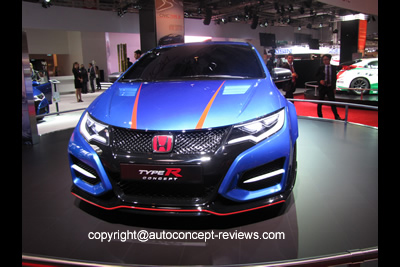 |
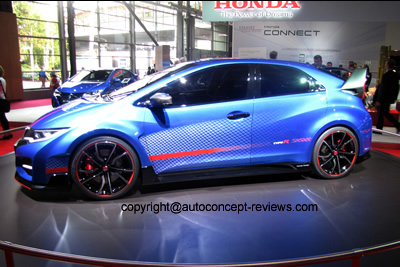 |
|
| |
16. Citroen Cactus Airflow 2 Litre per 100 km (141 mpg)
|
.The C4 Cactus AIRFLOW 2L project was undertaken as part of the “2l/100 km vehicle” programme set up by the Plateforme de la Filière Automobile industry group in France. The objective is to reduce the impact of vehicle running costs on household expenditure and to reduce the eco-footprint of car travel.
Citroën decided to progress this project using its newest model, the C4 Cactus. With this vehicle, the brand has made a commitment to bring customers more of what really matters today: more design, more comfort and more useful technology, combined with an affordable cost of ownership. More than any other vehicle, the C4 Cactus lends itself to this ambitious exercise – to develop a very low consumption, high-tech concept that is both efficient and attractive.
The Citroën C4 Cactus AIRFLOW 2L Concept
With its smooth design lines, efficient engines and technologies selected to reduce vehicle weight, the production Citroën C4 Cactus already boasts a range of features designed to reduce fuel consumption.
With the C4 Cactus AIRFLOW 2L concept, Citroën is taking this approach even further.
1. A body optimised for aerodynamic performance
On the C4 Cactus AIRFLOW 2L, some styling features have been modified and others created in order to optimise vehicle aerodynamics.
The production C4 Cactus is already 200kg lighter than the Citroën C4 hatchback, yet the C4 Cactus AIRFLOW 2L concept shaves off a further 100kg. This means Citroën’s designers have reduced the weight of the concept by 11% compared with the production vehicle.
With the brand’s latest-generation Euro 6 engines, the production C4 Cactus already ranks among the best in its segment with CO2 emissions from 82g/km and fuel consumption starting at just 91.1mpg.
The C4 Cactus AIRFLOW 2L concept goes even further by adopting the Hybrid Air drivetrain. Presented by the PSA Peugeot Citroën Group in January 2013, and featured on a Citroën C3 at the 2013 Geneva Motor Show, this technology combines a range of proven sub-systems and technologies. This includes a 3-cylinder PureTech petrol engine, a compressed air energy storage unit, a hydraulic pump/motor unit and an automatic transmission with an epicyclic gear train. An intelligent electronic management system manages input from the driver to optimise energy efficiency.
Three operating modes are available:
- Air power (zero emissions) where the compressed air motor takes over from the petrol engine
- Petrol power, using only the combustion engine
- Combined power, drawing upon both the combustion engine and the compressed air
On the C4 Cactus AIRFLOW 2L concept, the two compressed air storage tanks are made of composite materials and are positioned at the rear of the vehicle.
The PureTech 82 engine, already available on the production model, has been optimised for this new hybrid drivetrain. Friction losses, which account for 20% of the power consumed by the engine, have been reduced in several ways. This includes using a Diamond-like carbon coating, making moving parts lighter and using bearings to guide rotating parts. Further improvements were made by adopting new polymer pads and using very low viscosity oil. Combined with efforts to optimise combustion, overall engine efficiency has been improved by 5%.
Combining the PureTech 82 engine with Hybrid Air technology for this concept reduces fuel consumption by 30% and contributes significantly to achieving a vehicle capable of 2l/100 km, while approaching the PureTech 110 in terms of dynamic performance.
Related review : Citroen Cactus Hybrid Air Concept 2013 see car review.
|
| |
17. Peugeot 208 HybridAir 2 Litre per 100 km (141 mpg)
|
Average CO2 emissions for new PEUGEOT vehicles sold in Europe stood at 111.1g/km at the end of June 2014, compared with 115.1g/km for the same period in 2013. This makes the Brand one of the most successful car makers in Europe in terms of carbon reduction.
This impressive performance is largely the result of the rapid roll-out of Euro 6 engines, spearheaded by the BlueHDi diesel and the three-cylinder PureTech petrol variants. The 1.2-litre PureTech 130 S&S engine is the first petrol engine to feature PEUGEOT's Stop & Start in conjunction with automatic transmission. It is now available with the new six-speed automatic gearbox for the 308 range.
PEUGEOT takes things a step further with the 208 HYbridAir 2L demonstrator. This halves the consumption of the already highly efficient 208, resulting in 141mpg (2.0l/100km). Weight is significantly reduced by using a mix of steel and aluminium. And aerodynamics and rolling resistance have been improved thanks to a wealth of details such as an intelligent air intake, a lower stance and large diameter, narrow tyres.
HYbrid Air combines an internal combustion engine – in this case a 1.2-litre PureTech 82 that’s been made 4% more efficient – with a series of hydropneumatic features. These include a compressed-air tank, low-pressure tank acting as an expansion chamber, and combined engine-pump system mated to the transmission. This generates, stores and releases compressed air to assist and even replace the petrol engine. The result is maximum efficiency during transition phases, such as acceleration and getting off the mark.
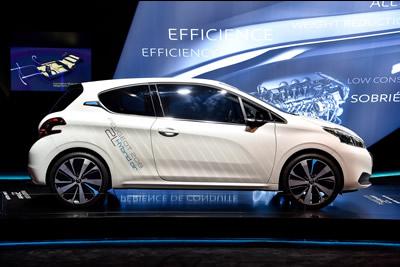 |
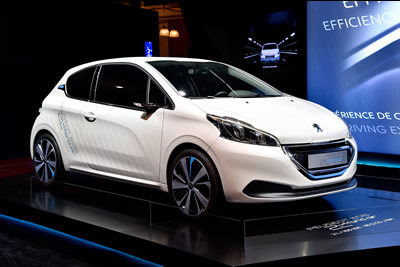 |
|
| |
18. Toyota iRoad Prototype - Personal Mobility Vehicle |
The TOYOTA i-ROAD Personal Mobility Vehicle (PMV) –a new form of transportation offering greater flexibility in the urban environment- makes its World Premiere at the 2013 Geneva Motor Show.
Offering a comfortable, enclosed environment for two occupants seated in tandem, the compact TOYOTA i-ROAD Electric Vehicle (EV) features unique, ‘Active Lean’ technology to provide a safe, intuitive and enjoyable, helmet-free driving experience over a range of up to 50 km on a single charge.... Review continues here
Three-year real-life test in Grenoble, France
In October 2014, urban transport of the future will become a reality in the French city of Grenoble.
A partnership formed between the City of Grenoble, Grenoble-Alpes Métropole, EDF, Sodetrel, Toyota and Citélib will conduct a 3-year trial targeting an increase in the efficiency and effectiveness of public transport systems (trams, buses, trains) through their interconnectivity with full electric Personal Mobility Vehicles.
This real-life test will allow commuters in Grenoble to drive the first or last few kilometres of their trip in a Personal Mobility Vehicle (PMV), whilst using public transport for the majority of their journey. This will not only increase flexibility and time-saving, but also contribute to reduced traffic congestion and improved air quality in city centres.
Connected to Grenoble’s public transport IT infrastructure, this trial scheme will complement the city’s current car-sharing service by allowing users to pick up a PMV at one location and drop it off at another.
By bringing together their respective competencies, the project partners aim to offer Grenoble an innovative service which will allow a thorough, real-life evaluation of the potential of this new form of mobility.
Toyota’s role in this new partnership will be to provide 35 i-ROAD PMVs as part of a total fleet of 70 ultra-compact, all-electric Toyota vehicles. All vehicles may be charged at one of over 100 charging points, spread around 30 new charging stations located close to public transport stops throughout the city.
Participants in this visionary car-sharing scheme will be able to make use of two dedicated smartphone apps. One includes an intelligent route planner designed to help users reach their destination via the most efficient route and transport method, based on real-time traffic congestion information, public transport schedules and the other offers availability of PMVs. Via this app, users will also be able to submit reservations for an available PMV.
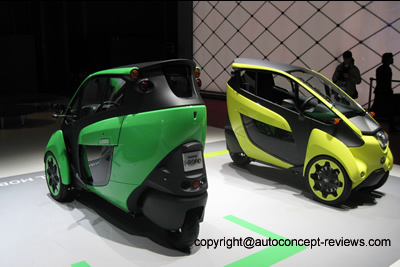 |
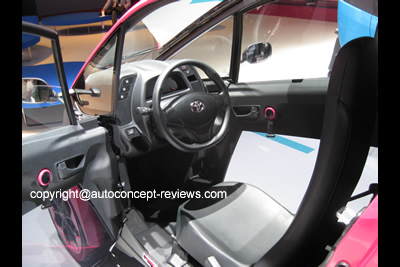 |
|
| |
19. Ssang Yong XIV Air Concept |
The Ssang Yong XIV-Air and XIV-Adventure are near production ready concepts of the soon to be launched X100. Based on the brand’s development philosophy of ‘Robust, Specialty and Premium’ and design theme of ‘Nature born - 3 Motion’, the XIV (eXciting user-Interface Vehicle) is a B-segment SUV series that has been shown at previous international motor shows over the past four years, the first time beginning at the IAA Frankfurt in 2011.
The Ssang Yong XIV-Air and XIV-Adventure are powered by either a 1.6 litre petrol or 1.6 litre diesel engine that meet Euro 6 emission standards, and measure 4,195mm in length and with a 2,600mm wheelbase. These two new concepts offer style, practicality and convenience for the smart user, and the new car will go on sale next year.
|
| 2. Some Exclusive New Models |
1. Mercedes AMG GT |
Affalterbach,Germany, September 2014 - As exciting as crossing the finish line in a car race – that was how Mercedes-AMG presented its new GT V8 sports car this evening, the second vehicle to be entirely developed under its own direction. None other than current Formula 1 points leader Nico Rosberg piloted the breath-taking newcomer from the sports car brand of Mercedes-Benz onto the stage. The emotions ran high for around 400 international guests from the worlds of politics, business and the media, including AMG's founders Hans Werner Aufrecht and Erhard Melcher, as the Mercedes-AMG GT made its début in its birthplace. Previously, Bernd Schneider, five-time DTM champion and with 43 victories the most successful DTM driver of all time, presented a parade of the most famous vehicles from AMG's history.... Review continues here
|
| |
2. Ferrari 458 Speciale A (Aperta) |
Dedicated to just 499 Ferrari collectors, the 458 Speciale A is the most powerful spider in Prancing Horse history, effortlessly marrying extreme performance with the sublime pleasure of drop-top driving. Its aluminium retractable hard top, which takes a mere 14 seconds to deploy or retract, helps reduce the weight difference with the Speciale coupé to just 50 kg.
The 458 Speciale A sports the most powerful naturally-aspirated road-going V8 engine ever built by Ferrari. It punches out a massive 605 cv (135 cv/l specific power output) and 540 Nm of torque at 6000 rpm yet only generates 275 g/km of CO2 emissions. The three international Best Performance Engine awards the V8 has won are acknowledged on a special plaque in the cockpit. Ferrari 458 Speciale A V8 engine capacity is 4.497 cc..
The new car sprints from 0-100 km/h in just 3.0 seconds and has a Fiorano lap time of 1’23”5. These superb results are thanks in great part to its front and rear active aerodynamics, the rigidity of a chassis that incorporates 10 aluminium alloys, and Side Slip Angle Control (SSC) which guarantees unparalleled sporty driving in all conditions, underscored by the seductively exhilarating signature Ferrari soundtrack.
As is the case with all Prancing Horse cars, the 458 Speciale A’s sculpted forms are absolutely performance-oriented. In fact, a series of innovative and original bodywork solutions has made the 458 Speciale A the most aerodynamically efficient Ferrari spider ever.
The 458 Speciale A is being premiered in a unique triple-layer yellow livery with a Blu Nart and Bianco Avus central stripe as well as five-spoke forged wheels in Grigio Corsa. The cockpit has a distinctive racing-inspired look: lightweight yet exclusive materials have been adopted throughout and, of course, crafted with Ferrari’s signature artisanal sophistication. This is particularly true of the finish of the dash, the moulded door panels and central tunnel in an exclusive blue carbon-fibre (also used for the treadplates) as well as the newly-designed seats in Alcantara© with contrasting stitching and 3D technical fabric.
|
| |
3. Toyota FCV Hydrogen Fuel Cell Production Model |
The world’s first production hydrogen-powered sedan is a development of the Toyota FCV Concept which made its international debut at the 2013 Tokyo Motor Show. Though remaining faithful to the avant-garde styling of that concept, the Toyota Fuel Cell Sedan’s radiator grille, headlamps and rear lights as well as the aerial, roof and fuel-filler flap have been modified in the interests of road-going practicality. And the concept’s cameras have, of course, been replaced by classic exterior rear-view mirrors.
Designed to provide a practical solution to motorists’ everyday requirements, the new hydrogen-powered Toyota is a front-wheel drive 4-door, 4-seater sedan. It features performance and a cruising range similar to a gasoline engine vehicle and a refuelling time of roughly three minutes
To maximise cabin space and lower the centre of gravity, a distinctive feature of its architecture is that the fuel cell, battery and tanks are installed under the floor. The two tanks store hydrogen at pressures of up to 700 bar.
The front compartment houses the electric motor, electronic control system and boost converter. Increasing the voltage produced by the fuel cell, this converter has allowed both the size of the motor and the number of cells to be reduced, thus cutting costs and increasing performance.
Since 2002, when Toyota began renting Highlander SUV-based fuel cell vehicles to Japanese and North American customers, technology has advanced considerably.
A key feature of this new generation of fuel cell is that it has no humidifier. The humidity required for its operation is derived directly from the production of water inherent in the chemical reaction between hydrogen and oxygen. The structure of the cell is therefore simpler, more reliable, more compact, lighter and, all-in-all, cheaper.
The car will go on sale in Japan before April 2015, and preparations are underway for launches in the U.S. and European markets in the Summer of 2015.
In Japan, the Fuel Cell Sedan will go on sale at Toyota and Toyopet dealerships, priced at approximately 7 million yen (MSRP - excludes consumption tax). Initially, sales will be limited to regions where a hydrogen refuelling infrastructure is also under development. Europe and U.S. prices have not yet been decided. More detailed information, such as specifications, exact prices and sales targets, will be announced at a later date. Toyota's plan defined by Didier Leroy, President and CEO for Toyota Motor Europe, is to start sales in Germany, the UK and Denmark. The plan will then expand gradually but with determination.
The Hyfive Project
The aim of the Hyfive Project (Hydrogen for Innovative Vehicles) is to speed up the introduction of hydrogen-powered cars on European roads. 15 car manufacturing and energy providing partners are involved. They will join forces to ensure a coordinated deployment of fuel cell vehicles, in conjunction with the establishment of the refuelling infrastructure required for their operation.
Toyota, BMW, Daimler, Honda and Hyundai will be responsible for the deployment of a fleet of 110 vehicles to 6 European cities -Bolzano, Copenhagen, Innsbruck, London, Munich and Stuttgart. A network of hydrogen refuelling pumps will be developed simultaneously within these 5 regions, as well as in Sweden, a close neighbour of Denmark.
From now until the effective launch of the programme at the end of 2015, the vehicles deployed by Toyota will be equipped with a continuous data login system for the entire duration of the 3-year project. Thus they will provide the engineers with detailed, day-to-day feedback on their use and performance, information essential to the further development of this fledgling technology.
For all stakeholders, this project will also build the public image of the hydrogen-powered car. |
Related review :
|
|
Toyota Powertrain Roadmap |
4.
Rolls Royce Phantom Metropolitan Collection |
The Phantom Metropolitan Collection, unveiled at the Mondial de L’Automobile in Paris, features exquisite hand-crafted design inspired by the modern metropolis. Just 20 of these beautifully crafted motor cars will be available to commission.
Phantom’s launch in 2003 emphatically heralded the renaissance of Rolls-Royce Motor Cars by affording the world’s most discerning and successful men and women the consummate super-luxury experience. Central to the allure of its unique promise is an interior furnished in the very finest materials; expertly hand-applied by the master craftspeople at the Home of Rolls-Royce in Goodwood, England. It presents a space that cossets occupants and provides the ultimate sanctuary in which to traverse and observe the city in supreme comfort.
The Phantom Metropolitan Collection pays homage to the world’s great metropolises through the meticulous application of marquetry – the art of inlaying small pieces of wood veneer to form decorative motifs. When open, Phantom’s signature picnic table presents occupants with an elevated view of the city, created through the expert application of 500 individual wood veneer pieces. Indeed, the process of hand-cutting, colouring, shaping and applying is so complex these unique objects d’art take an expert wood craftsperson several days to complete. On closing the tables, a different perspective of the cityscape is offered – reflecting the view one gets when effortlessly travelling in the rear of a Phantom.
Ample power is supplied by a 6.75-litre, naturally aspirated, V12 engine. Developing 453bhp / 338kW and 720Nm / 531lb ft of torque at 3500rpm, delivery is smooth and abundant. Furthermore, with 75 per cent of engine power available at just 1000rpm, progress from a standstill is effortless and remains so throughout the rev range.
The powerful V12 will accelerate Phantom Metropolitan Collection to 60mph in under six seconds and on to a limited top speed of 149 mph / 240 km/h. It stops in equally impressive fashion, using 374mm / 14.7in ventilated disc brakes at the front and 370mm / 14.5in at the rear. RRP excluding tax and freight 450.075 Euros. .... More pictures here
|
| |
5.
Rolls Royce Drophead Coupe Waterspeed Collection |
The Rolls Royce Phantom Drophead Coupé Waterspeed Collection is paying tribute to Sir Donald Campbell’s record-breaking achievements and the Pinnacle Travel Phantom that made its debut at the Beijing Auto Show. These limited Collections serve to inspire customers, with record levels of Bespoke demand reported in September 2014. Nearly every Phantom across the globe, 90% of Wraith and 80% of Ghost family motor cars were commissioned by customers with some element of Bespoke design. Bespoke is Rolls-Royce.
On the morning of 1 September 1937, at the height of the battle between the United States and Great Britain to be the fastest nation on water, British speed record pioneer Sir Malcolm Campbell headed out onto the calm blue waters of Lake Maggiore on the Swiss-Italian frontier. Pointing the nose of his Bluebird K3 hydroplane boat south, powered by Rolls-Royce’s R-engine, he established a new water-speed record of 126.32mph. The following day he went one better, piloting his craft to 129.5mph, emphatically breaking the United States’ five-year stranglehold on the world water-speed record. Campbell’s momentous achievement captured the world’s attention and reaffirmed Rolls-Royce R-engines’ record-breaking superiority after triumphs on land and in the air.
Celebrating this incredible act of British ‘Derring-Do’, Rolls-Royce Motor Cars Bespoke department has created the Waterspeed Collection, 35 specially designed PhantomDrophead Coupés. Echoing the cutting-edge technology employed in the construction of the K3, only the finest contemporary materials have been used to furnish the WaterspeedCollection. Brushed steel perfectly complements an exclusively developed Maggiore Bluecolour scheme. Perfectly book-matched open-grain Abachi wood veneer evokes the sense of a boat effortlessly gliding through water at pace, whilst the exterior coachline and laser etchings inside the car bring Campbell’s ‘Bluebird’ motif back to life.
Maggiore Blue also permeates the interior of Waterspeed. Rolls-Royce Motor Car’s first ever two-tone steering wheel is enrobed in the blueleather, as are highlights around the cabin such as the piping on the seats, dashboard top, cup holder surround and door accents.
In addition, Maggiore Blue also brings a new twist to the famous power reserve gauge, another of those trademark Rolls-Royce design cues that raises a smile as it casually reveals the enormous power potential at a driver’s disposal. Blue accents on Waterspeed’s power reserve gauge invite the driver to go ‘into the blue’ as Sir Malcolm Campbell did many times in pursuit of his world speed records.
But this unique colour treatment also creates the pièce de la résistance of Waterspeed, as it envelops its 453bhp 6.75-litre V12 engine – a first for Rolls-Royce. This echoes how Campbell’s engineers always painted Bluebird’s legendary 2,300bhp 36.5-litre V12 Rolls-Royce R aero engine that smashed all those records on air, land and, of course, water.
Ample power is supplied by a 6.75-litre, naturally aspirated, V12 engine. Developing 453bhp / 338kW and 720Nm / 531lb ft of torque at 3500rpm, delivery is smooth and abundant. Furthermore, with 75 per cent of engine power available at just 1000rpm, progress from a standstill is effortless and remains so throughout the rev range.
The powerful V12 will accelerate Phantom Drophead Coupé to 60mph in under six seconds and on to a limited top speed of 149 mph / 240 km/h. It stops in equally impressive fashion, using 374mm / 14.7in ventilated disc brakes at the front and 370mm / 14.5in at the rear. RRP excluding tax and freight 465.300 Euros.
|
| |
| 6.
Jaguar F Type Project 7 |
Jaguar F-TYPE Project 7, the latest model in Jaguar's acclaimed F-TYPE sports car range, is set to make its debut at the 2014 Goodwood Festival of Speed on 26June.
Jaguar F-TYPE Project 7 is the first Jaguar performance vehicle from Jaguar Land Rover's Special Operations team, and will be produced in an exclusive, limited-edition run of up to 250 units. Its distinctive roadster body, introduced in concept form last summer, pays tribute to one of the most famous and iconic racing Jaguars: the three-time Le Mans winning D-type, which in 2014 is celebrating its 60th anniversary year. F-TYPE Project 7's name pays homage to Jaguar's seven outright Le Mans wins. ... Review continues here
|
| |
7. Lamborghini Huracan |
Sant’Agata Bolognese, March 2014 -- A new era is beginning for Automobili Lamborghini and the luxury super sports car segment: with the brand new Huracán Lamborghini is not only presenting the successor to the iconic Gallardo,
but is also redefining the benchmark for luxury super sports cars in this segment. With its pure and unique design, an innovative technology package, outstanding dynamics and excellent quality, the Lamborghini Huracán offers a super sports car experience on a whole new level. The Lamborghini Huracán combines absolute performance with easy-to drive road behavior and both luxurious and sport-oriented finish. With the Huracán, Lamborghini is taking a big step into the future, and enhancing the brand’s illustrious history with the next automotive legend.
Starting from January 2014 the Lamborghini Huracán will be the protagonist of over 130 private preview events in more than 60 cities throughout the world. See Car Review for more pictures and informations
|
| |
8.
Mazda MX-5 |
Mazda launched the all new Mazda MX-5 at the Paris Motor Show. Arriving 25 years after the original MX-5 was unveiled at the 1989 Chicago Auto Show, the MKIV of Mazda's legendary sports car also appears at a time when the company is posting sustained growth both in terms of unit sales and profits.
First revealed last month at Mazda's new facility the "Mazda Space" in Barcelona, the all-new Mazda MX-5 has shed 100kg versus the outgoing model. The model on display in Paris features SKYACTIV technology, including a SKYACTIV-G 1.5-litre petrol engine and six-speed SKYACTIV-MT manual gearbox in the roadster's classic front-midship engine, rear-wheel drive layout with near perfect 50:50 front-rear weight distribution.
Its designers came up with a breathtakingly sporty KODO - Soul of Motion design for the exterior, with a lower centre of gravity and longer bonnet along with character lines expressing vitality and motion. Inside, the new model retains the close-fitting yet comfortable fit inherent to all MX-5s over the years. Plus, Mazda has also added state-of-the art technology like i-ACTIVSENSE active safety technology and MZD Connect, the company's in-car connectivity concept.
Almost 950,000 Mazda MX-5s have been produced over the past quarter century, making it the best-selling two-seater sports car of all time.
|
9.
Bentley Mulsanne Speed |
Bentley redefines the fastest ultra-luxury driving experience in the world with a new pinnacle flagship. The new Mulsanne Speed is tailored for the driver, with 537 PS (530 bhp / 395 kW), 1,100 Nm (811 lb.ft) and selectable sports suspension and steering on demand.
The reengineered powertrain, featuring Bentley’s mighty 6¾-litre twin-turbo V8, propels the Mulsanne Speed to 60 mph in 4.8 seconds (0‑100 km/h in 4.9 seconds) and on to a top speed of 190 mph (305 km/h). In modern Bentley tradition, the extra performance is matched by markedly improved efficiency; a 13% gain means a range extended by 50 miles (80 km).
New and contemporary styling features define the Mulsanne Speed as a statement in quintessential British luxury. On-board technology and connectivity are discreetly integrated beneath the finest materials, created with unrivalled craftsmanship and exquisite handcrafted details.
Chairman and Chief Executive of Bentley Motors, Wolfgang Dürheimer, comments:
“The new Mulsanne Speed is the car that defines Bentley, as a flagship for driving luxury performance. Our customers don’t compromise, and we’ve adopted the same approach in the design, engineering and crafting of our new flagship. The Mulsanne Speed is distinguished, calm and relaxing, but always with a connection to the road and relentless dynamic performance on demand. In this car, every journey becomes a drive.”
At the heart of the Mulsanne Speed is Bentley’s iconic 6¾-litre twin-turbo V8 engine, which has been re-engineered for the Mulsanne Speed as well as the signature Mulsanne. A totally redesigned combustion system (including combustion chamber, inlet ports, fuel injectors, spark plugs, and compression ratio) promotes a much faster and more controlled combustion process. Through combining these advances with new variable valve timing and optimised turbocharger control, torque output of the engine has been pushed to record levels – 1,100 Nm (811 lb.ft) from 1,750 rpm.
The swell of torque from low engine speeds builds to a new peak power output of 537 PS, enough to drive the Mulsanne Speed to a top speed of 190 mph (305 km/h) – an unrivalled figure in the ultra-luxury sector. The 0‑60 mph sprint is covered in 4.8 seconds, with 0‑100 km/h taking just 4.9 seconds.
The new engine is paired with a recalibrated gearbox designed to enhance the driving experience of the Mulsanne Speed. The gear strategy is optimised for the new, higher wave of torque, and is designed for instant torque delivery on throttle application. The connection between the car and driver has been the focus, and extensive validation with both keen drivers and professional chauffeurs has proven the new setup. A new “S” mode gives the driver even more control, and maintains the engine speed above 2,000 rpm so that the turbochargers are always ready to deliver instantaneous performance.
An extensive recalibration of the engine management system has yielded benefits beyond increased torque and power. The cylinder deactivation system, that runs the engine as a V4 during light load, has been retuned for smoother transitions between V8 and V4 for even greater refinement. This work combines with a new gearbox control strategy and the engine hardware improvements to give a new level of efficiency for the Mulsanne engine.
Meeting the new EU6 emissions legislation, and designed to also meet the upcoming US LEV III standards in the future, the new powertrain records 342 g/km of CO2 on the NEDC drive cycle – a 13% improvement on the current Mulsanne. The ensuing fuel economy improvements have extended the fuel range of the new Mulsanne Speed by 50 miles (80 km).
To deploy the effortless power and acceleration on offer in the Mulsanne Speed, an even more driver-focused Sport suspension mode is included. While the Bentley and Comfort suspension modes provide a comfort-focused and fully compliant chassis setup, the Sport mode stiffens the all-round air suspension for improved body control and adjusts the steering dynamics for greater feedback and accuracy. The driver can also choose to individually match steering, chassis and engine tunes according to personal preference through the Custom setting.
|
| |
| |
|
1.Porsche 919 Hybrid LMP1 |
Porsche is returning to the top category of the famous endurance race classic at Le Mans and the World Endurance Championships (WEC) for sports cars with its newly developed Porsche 919 Hybrid. The LMP1 prototype, which is designed for extreme efficiency, is the most complex race car that Porsche ever put on wheels. It serves as a research platform for fundamental technology to be used in future production models, with its combination of two different energy recovery systems and a downsizing turbocharged engine. So the real winner of Porsche factory racing is already clear: it is the customer... Review continues here
|
| |
| 2. Audi R18 e-tron Quattro Diesel hybrid LMP1 |
Audi has prepared the Audi R18 e-tron as a new challenge to win the 2012 World Endurance Championship where some hybrid solution are allowed for the first time. After winning the 24 Hours of Le Mans, the Audi R18 e-tron is accumulating winning positions and is on the way to win the 2012 World Endurance Championship.... Review continues here
|
| |
| 3.Volkswagen POLO WRC |
Sebastien Ogier and the Volkswagen Polo WRC completed their second overall win in the FIA World Rallye Championship. Jari Matti Latvala and Andreas Mikkelsen complete the success.
Volkswagen Polo R WRC Rallye: With the newly developed Polo R WRC, Volkswagen Motorsport is presenting a road-going prototype for the FIA World Rally Championship. The “hottest Polo ever” – as it was called by Volkswagen Head of Development Dr. Ulrich Hackenberg even at its first official airing – will be starting its tour around the globe from 2013 at numerous WRC races. At the heart of this racing version beats a 1.6 l TSI engine with
approx. 220 kW / 300 PS power output, which ensures impressive acceleration from naught to 100 km/h in 4.1 seconds. The body is reinforced by welded multipoint roll cage built to FIA specifications. The official drivers are Jari-Matti Latvala, Sebastien Ogier and Andreas Mikkelsen. The WRC Championship first participation in 2013 will be at the Monte Carlo Rallye.... Review continues here |
| |
| |
4. Peugeot 2008 DKR DAKAR 2015 Rallye Raid |
Peugeot, Red Bull and Total have decided to join forces to contest the 2015 Dakar. The car that will spearhead the team’s challenge has finally broken cover. The Peugeot 2008 DKR shares an unmistakable family resemblance with Peugeot’s road-going crossover, albeit with more muscular forms and more imposing overall proportions that have been honed to meet the challenge that lays ahead.... Review continues here
|
| |
5.
Citroen C-Elysee WTCC - 2014 World Champion |
CITROËN entered the FIA World Touring Car Championship in April of this year, demonstrating once more its ability to address new sporting challenges. Today, CITROËN C-Elysée WTCC is No. 1 in the Manufacturers’ rankings. This championship has a strong following in Asia and Latin America and is an opportunity for CITROËN to build its international renown.
The CITROËN C-Elysée is a C-segment saloon aimed primarily at high-growth international markets such as Latin America, the Mediterranean Basin, China and Russia. It is enjoying real market success, with more than 120,000 orders in the space of a year.
Anchored to the tarmac on its 18-inch wheels, the CITROËN C-Elysée WTCC is, in a word, impressive. Underlining the radiator grille with its prominent double chevron, the bumper features an aerodynamic splitter. The broader front and rear wings lend a decidedly sporty look to the bodywork. At the rear, the large spoiler ensures that the car hugs the track
Under the bonnet, the CITROËN C-Elysée WTCC is powered by a 1.6-litre turbocharged direct- injection engine. With its large turbo flange, power output is now close to 380 bhp. The car comes with front-wheel drive transmission, controlled by a six-speed sequential gearbox. ... Review continues here
|
| |
6. Mitsubishi Outlander PHEV- Asia Cross Country Rally 2014 |
The team successfully completed the grueling Asia Cross Country Rally 2014 from Pattaya, Thailand, to Phnom Penh, Cambodia, covering a total distance of approximately 2000 km and demonstrating the Mitsubishi Outlander PHEV's outstanding reliability. It was classified 14th overall and winner of its T1E class for electric vehicles. The rally was completed in 19 hours 17 minutes and 12 seconds.
|
| |
7.
Hyundai i20 WRC |
Hyundai is participating in the World Rally Championship in 2014 with a four-wheel drive i20 WRC.
|
8.
Honda RA271 Formula One 1964 |
Honda was also using its appearance at the 2014 Mondial de l’Automobile to showcase its long history in Formula One with the RA271, the first Honda to race in F1, which made its debut at the German Grand Prix at the Nürburgring in 1964.
Symbolising Honda’s challenging spirit, the RA271 featured an all-new chassis, with a light alloy panel design, replacing the obsolete space frame concept employed on the RA270F test car. Development of this state-of-the-art aluminium monochrome chassis took the team into new territory, leading them to consult textbooks on aircraft technology to support their efforts. A key priority was to ensure optimum stability and weight distribution once the engine was mounted, and so, drawing upon its expertise in motorcycle production, Honda took the innovative choice of installing the V12 engine transversely in the chassis.
|
| |
9.Honda Civic WTCC 2014 |
Honda’s second full season in the Championship, with the introduction of brand new technical regulations, this year represents a whole new challenge for the squad and the engineers at Honda R&D and J.A.S. Motorsport. The Civic WTCC 2014 is a more impressive, muscular car than the 2013 model and hides a powerful 380 bhp 1.6 litre 4 cylinder direct injection turbo-charged petrol engine under the hood.
For the 2014 Championship the Castrol Honda World Touring Car Team is entering two Civics; one for Italian Gabriele Tarquini – the 2009 FIA WTCC Champion - and one for Portuguese driver Tiago Monteiro
|
| |
| |
10.Peugeot 208 T16 and 208 WRX |
After the 208 R2, Peugeot Sport is opening a new chapter in the sports variants of the 208, and not least with the 208 T16. A true ‘competition wildcat’, it will replace the 207 Super 2000, benchmark of the S2000 category as much for its technical performance as for its sporting and commercial performance
The 208 T16 benefits from the product developments of the 208 production car, particularly in regards to the weight. The shell of the 208 has, in fact, benefited from a weight reduction of approximately 40 kilos compared with its predecessor the 207. On the other hand, its dimensions are a fantastic advantage for the T16 with its long wheelbase which provides excellent chassis stability. More compact, the 208 will be more agile and efficient as a result, key factors that are sought after in a competition car. All of these dynamic qualities of the 208 combine to give the T16 excellent road holding.
208 WRX - Spirited and agile, the Peugeot 208 WRX continues its assault on the FIA World Rallycross, in the hands of Timmi Hansen (Sweden) and Timur Timerzyanov (Russia). The 208 WRX has already won a number of podium positions.
| Technical Data |
Peugeot 208 T16 |
Peugeot 208 WRC |
| ENGINE Type |
EP6 CDT |
RDC 1-2014 |
| capacity |
1598 cc |
2040 cc |
| Number of cylinders and valves |
4 cylinders 16 valves |
4 cylinders 16 valves |
| Maximum Power |
280 hp at 6000 rpm |
540 hp at 6000 rpm |
| Maximum Torque |
400 Nm at 2500 rpm |
850 Nm at 4500 rpm |
| Transmission |
Four wheel drive |
Four wheel drive |
| Clutch |
Dual disc |
Tri disc |
| Gearbox |
Five-speed with sequential control |
Six-speed with sequential control |
| Structure and Materials |
Shell + Tubular roll-over bar |
Shell + Tubular roll-over bar |
| Front suspension |
Pseudo MacPherson |
Pseudo MacPherson |
| Rear Suspension |
Pseudo MacPherson |
Pseudo MacPherson |
| Lenght |
Idem standard, 3962 mm |
Idem standard, 3962 mm |
| Width |
1820 mm |
1820 mm |
| Wheelbase |
2560 mm |
2560 mm |
| Minimum weight |
1230 kg |
1130 kg |
|
| |
11.Andros Electric Car 04 |
The Andros Ice Racing for Electric Cars utilises The Andros Electric Car built bu Exagon Engineering. There is a tubular spaceframe. The electric motor is a 67 kW Siemens producing 122 cv (90 kW at 4500 rpm and driving the rear wheels with autolock differential. The battery is Lithium ion by SAFT with twenty seven modules and 78 Ah capacity with a maximum voltage of 324 Volt. Charging time is 45 minutes for 40% load using a SEGULA 9,9 kW 32A charger.
The car weights 800 kg and is capable of acceleration 0 to 60 mph in 5,2 seconds. Maximum speed is claimed for 150 kph on ice.
|
| |
12.FIA Formula E Electric single seat racing car championship |
2014 marks the begining of a new era in the motorsport competition: the launch of the new FIA Formula-E championship in September in which Renault is committed as official technical partner. Renault Sport's engineers were responsible for battery integration as well as the reliability and safety of the race cars. The chassis was developped by Dallara. Maximum power 200 kW (270 hp) Race mode 150 kW (202 hp) acceleration 0-60 mph in 3 seconds and maximum speed set at 150 mph (FIA limited).
The races are performed in city road circuit and each driver has two cars, changing car rather than recharging the battery.
|
| |
4. Automobile and Fashion - Historic and Classic Cars |
1.
1897 Panhard & Levassor M2F 6 CV |
Panhard & Levassor may be considered as world's first automobile manufacturer as it launched production for 30 cars in 1891. Panhard and Levassor won the first intercity race in 1897, Paris-Bordeaux-Paris.
The model illustrated has been produced in 58 examples within a total production of 224 units all models included.
Two cylinder 1648 cc Phenix engine. This model was produced between 1896 and 1902. Top speed 25 kph 15,5 mph).
|
| |
2. 1925 Ford Model T Coupe |
The Ford Model T was introduced on October 1st 1908. It had a 20 hp 2.900 cc four cylinder engine with side-valves. The transmission was two-speed plus reverse. Brakes were fitted only to the rear wheels. Top speed was 42 mph (68 kph). All in all, more than 16 million Model Ts were made, more than 15 million of them in Detroit alone, before production ended in May 26th 1927. The Ford Model T was also assembled at several overseas plants. Simply engineered and sold at incredibly low prices, the Ford Model T put the world on wheels. The car was introduced with a price tag of 850 $. The Ford Model T later sold for as little as 260 $, without extras, because of production savings Henry Ford passed on to customers. Henry Ford initiation of mass production of vehicles on the moving assembly line led to lower car prices.. Story continues here ...
|
| |
3.
1935 Renault Viva Grand Sport |
The Renault Viva and Nerva models with streamlined body style were introduced at 1934 Paris Motor Show with six and eight cylinder engine respectively. The Viva Grand Sport was introduced one year later with both open or closed body style.
6 cylinder 4.085 cc engine producing 90 hp. Three-speed gearbox transmission operating the rear wheels. Drum brakes on four wheels with servo operation. Topspeed 130 kph (80 mph). Dimensions Lenght 4,70 m, width 1,82 m, weight 2000 kg.
|
| |
4. 1935 Voisin C28 Aerosport |
There are only two Voisin C28 Aerosport in the world and this one has its interior prepared by Hermes. The car was built on lower chassis and is propelled by a 3 Litre engine. There are three seats in front . The maximum speed is 150 kph. For his personal use, Gabriel Voisin prepared a special version with 6 Litre 12 cylinders engine using two six cylinders assembled together and producing 150 hp.
|
| |
5. 1937 Peugeot 402 Eclipse |
The Peugeot 402 Eclipse was the first streamlined car built in series with convertible roof making it the predecessor of the CC (Coupe Cabriolet) currently proposed today. The retractablewas invented in 1932 by Georges Paulin and appeared for the first time in production in 1934 on the Peugeot 401.
Propulsion was by a four cylinder 1991 cc engine producing 55 hp and connected with 3 speed transmission driving the rear wheels.
The Peugeot 402 Eclipse were produced between 1935 and 1941 at 580 units.
|
| |
6. 1951 Jaguar XK120 |
The Jaguar XK 120 was created as a stopgap solution for the "London Motor Show" in October 1948, the first to be held after the war. Actually, Jaguar wanted to present its new engine there as a power unit for the new high-speed saloons (the subsequent Jaguar Mark VII). However, the development of the body at Pressed Steel was not yet complete and the company decided to present the car in the guise of a streamlined sports car to act as an eye-catcher Story continues here ...
|
| |
4. 1957 Mercedes 300 SL Gullwing |
In March 1952, Mercedes Benz presented the 300 SL ((W194) racing sports cars prototype. The same year, the race team scored one-two-three-four finish with the 300 SL on the Nurburgring followed by a victory at 24 Hours of Le Mans and the "hair raising" Carrera Panamericana.... Review continues here
|
| |
5. 1958 Citroen DS19 |
The Citroen DS19 was introduced in October 1955 at the Automobile Show. The car is famous for its aerodynamic body style and advanced technology including hydraupneumatic suspension. The Citroen DS has been produced in a total 1.456.115 examples between 1955 and 1968.
Engine: four cylinders in line, 1911 cc, 75 hp at 4500 rpm. Dimensions: Lenght 4,70 m, width 1,65 m, height 1,5 m.
|
| |
6. 1963 Renault 4 Parisienne |
A special contest was initiated in 1963 by Renault and Women's magazine ELLE. Women were invited to test the handling of the Renault 4 finished for the occasion with original fashion painting. The special painting Renault 4 was introduced on the marked in 1968 under the designation Renault 4 Parisienne.
Engine four cylinders 747 cc. Three-speed gearbox, front wheel drive and drum brakes on all wheels.
|
| |
7. 1964 Facel HK II |
The Facel Vega brand was created in 1957 by Jean Daninos. Alongside the "small" Facellia, the company's team developed the Facel II that was introduced at the 1961 Paris Motor Show. Several rich customers decided for the Facel II, like the Shah of Iran, Norodom Sihanouk king of Cambodia, Rob Walker owner of Ecurie Ecosse racing team or Beatle Ringo Starr in Europe. Some rich American made the same choice like Tony Curtis or Debbie Reynolds.
The Facel II is an early successful combination of American and European automobile properties. It is said that ninety percent of the 183 Facel II produced are still in operating condition.
|
| |
8. 1968 Alfa Romeo 33 Carabo by Bertone |
The exceptional style of the Alfa Romeo Carabo was prepared by Marcello Gandini for Bertone and was introduced in 1968. The Carabo is based on the chassis of the Alfa Romeo 33 Stradale with aluminium and magnesium spaceframe and a 230 hp V8 engine.
The construction was made delicate by the brand new laminated windscreen. The wedge shape body style remains a classic in car design history.
|
| |
9. 1970 Citroen SM |
The Citroen SM is a grand touring car introduced at 1970 Geneva Motor Show .when Maserati was the property of Citroen. The Citroen SM proposes a Maserati 2670 cc V6 producing 170 hp at 5500 rpm and Citroen hydropneumatic suspensions. Dimensions: lenght 4,89 m, width 1,84 m, height 1,32 m. 12.920 Citroen SM were produced between 1970 and 1975. Related car review : Citroen SM Prototype
|
| |
10. 1970 Mercedes C111 II |
The Mercedes C111 research vehicule introduced in 1969 was not just interesting as a concept sports car illustrating a possible successor to the gull wing doors 300 SL but especially because it was powered by a Wankel rotary piston engine than by a reciprocating piston engine. At the time, many manufacturers were interested in Felix Wankel's unconventional propulsion system. Mercedes Benz too had been experimenting with Wankel engines since 1962. However, the Wankel engine was to be extensively road tested before being fitted in production cars.Story continues here ...
|
| |
11. 1971 Alfa Romeo Montreal by Bertone |
The Alfa Romeo Montreal was prepared with Bertone as a prototype for the 1967 Montreal Universal Exhibition. It used the Alfa Romeo V8 engine of the 33 Stradale. The weight distribution is 60% on front and 40% on the rear axle as the engine is positioned at the front end and the air intakes behind side window are ornamental. After three year of development the Alfa Romeo Montreal entered production. 3.925 cars were produced between 1970 and 1974.
Engine 2593 cc. V8 with four overhead camshaft, Spica mechanical fuel injection, produces 200 hp. Five-speed ZF gearbox. Weight 1270 kg.
|
| |
12. 1970 Toyota 2000 GT |
The 1960s saw the appearance of many superb sports cars around the world. Toyota began to develop a Gran Turismo model, the Toyota 2000 GT prototype, unveiled at the 1965 Tokyo Motor Show, and which production started in May 1967. 337 units will be produced.
The ultra-low coupe body was designed in-house, supported by an X-shaped backbone frame that came equipped with a Yamaha 2000 cc. in-line six cylinder DOHC (double overhead camshaft) engine, a four wheel independent suspension with double wishbone and coil spring layout, four wheel disc brakes and four magnesium wheels.Story continues here ...
|
| |
13. 1971 Maserati Boomerang by Ital Design |
Giorgetto Giugiaro founded Ital Design in 1968 after a successful styling design career at Bertone or Ghia. The wedge shape Maserati Boomerang was introduced in 1971. The Maserati Boomerang is based on 4719 cc V8 of the Maserati Bora. This engine produces 306 hp at 6000 rpm.
|
| |
14. 1971 Renault Alpine A310 |
The Renault Alpine A310 is a 2+2 berlinetta introduced in 1971 alongside the successful competition Renault A110 berlinetta. The A310 is not intended for the track eventhough some specially prepared did participate in racing events. The A310 uses the same 1600 cc four cylinder engine as the A110 and is originated from the Renault 16. The A310 is 200 kg heavier than the A110 berlinetta. Starting in 1976, the Renault Alpine A310 was also proposed with a V6 derived from the Renault 30 TS.
Engine 1605 cc in line four cylinder producing 125 hp at 6000 rpm. Five-speed gearbox. Dimensions: lenght 4,18 m, width 1,62 m, weight 835 kg Top speed 215 kph.
|
| |
15. 2001 Renault Talisman Concept |
The Renault Talisman Concept was introduced at the 2001 Franfurt Motor Show as four seats grand touring sedan of the future. Extremely pure body style is one of the key element of this exceptional design study. It is propelled by a 4,5 Litre 32 valves V8 with automatic transmission. Dimensions: lengh 4,81 m width 1,95 m, weight 1600 kg.(3527 lb.)
|
| |
16. 2002 Courege Electric Prototype Bulle |
Famous Fashion Company was founded by André and Coqueline Courrèges in 1961 and is well known for women's dress. In 1969 Coqueline Courrèges extended its creative abilities to electric car concepts. The Bulle is one of those creations. It can be arranged for two or four seats. Lenght 3,125 m width 1,80 m, height 1,85 m, weight 1000 kg. Claimed operating range 170 km (105 miles) with Nickel Cadmium 96 V batterie of 100 A/h capacity. The Bulle is front wheel drive and utilizes a four-speed mechanical gearbox. Claimed top speed 110 kph (68 mph)
|
| |
Photos and Texts : Paul DAMIENS, NEWSPRESS and Manufacturers Archives |
|








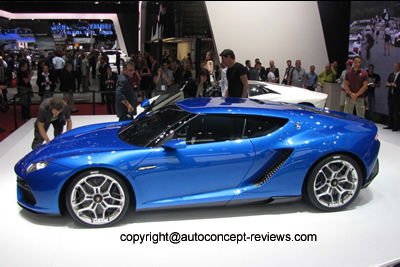
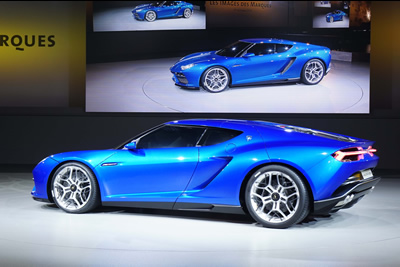
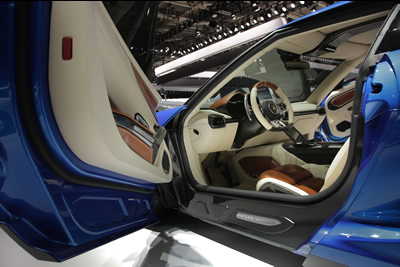
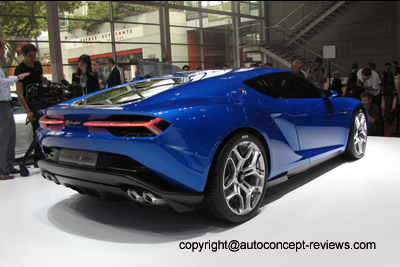
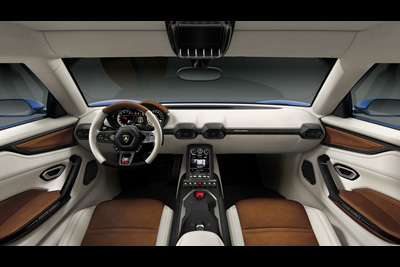
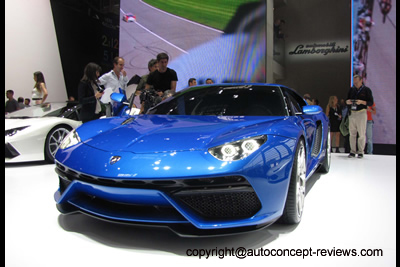
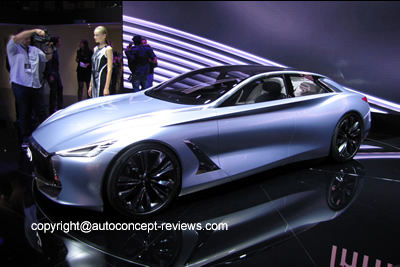
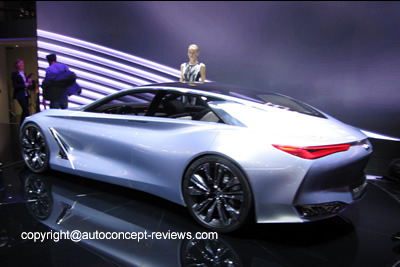
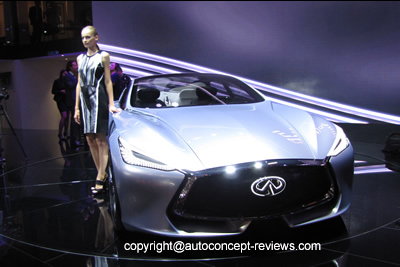
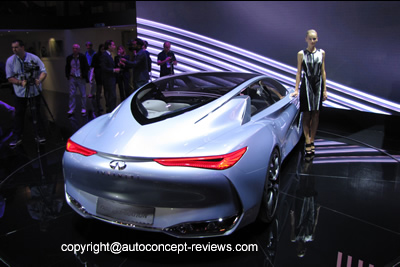
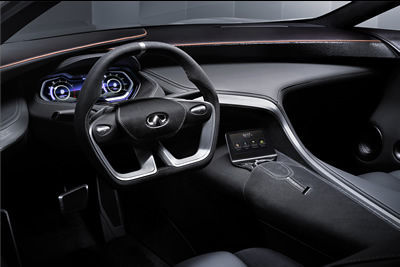
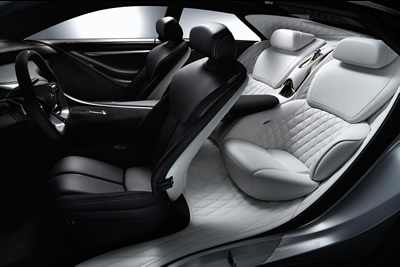
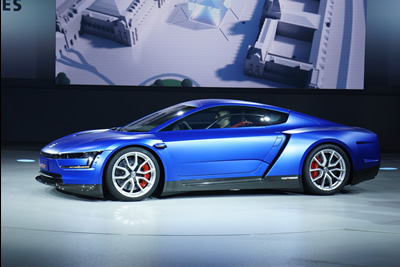
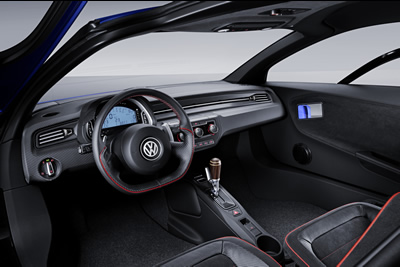
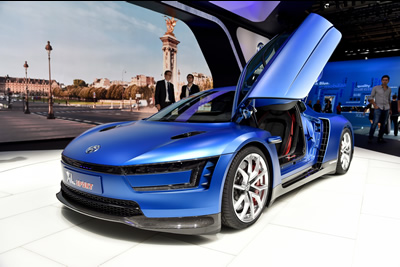
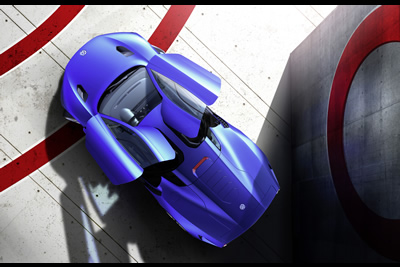

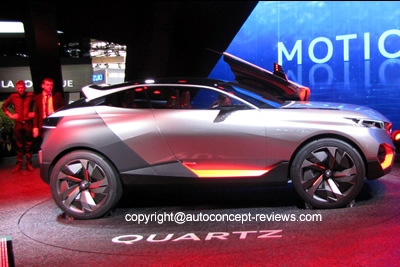
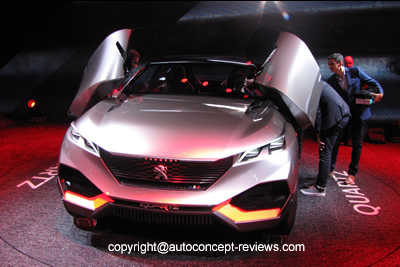
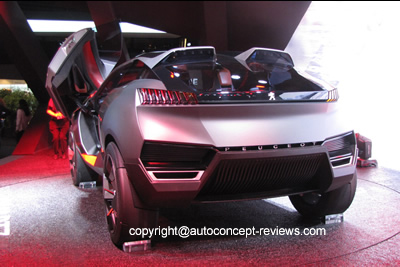
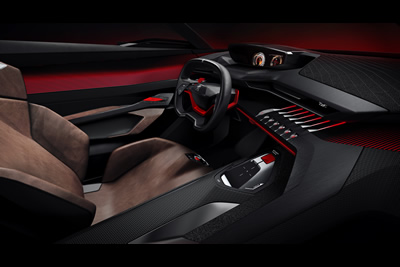
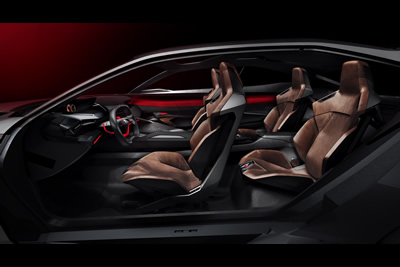

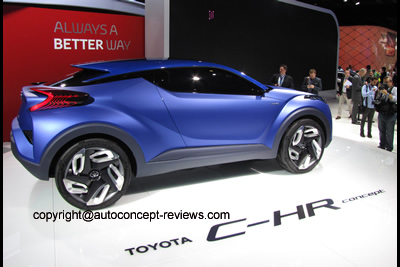
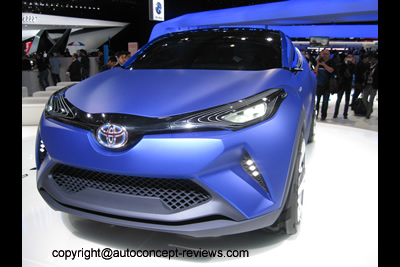
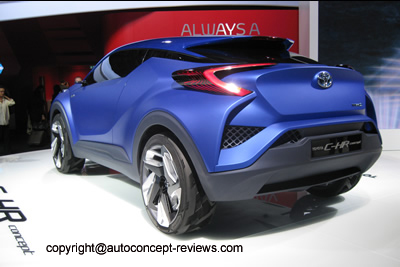
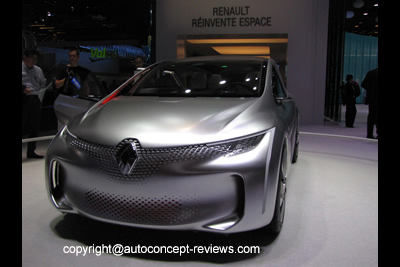
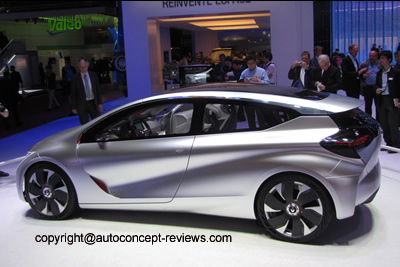
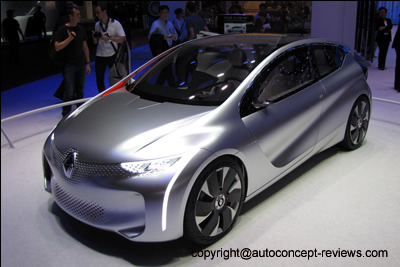
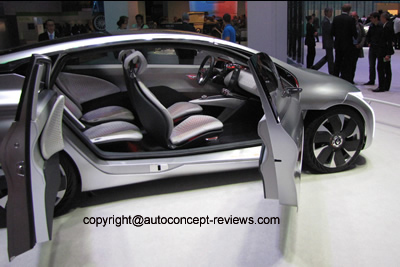
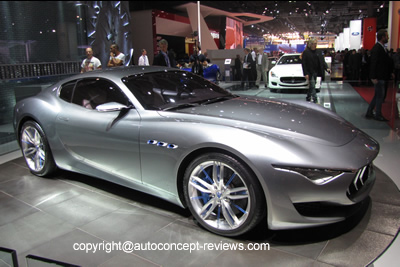
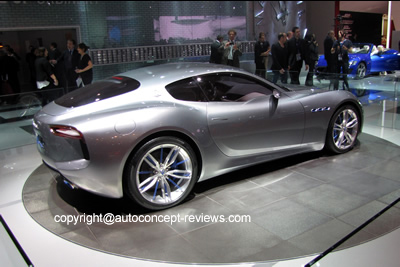
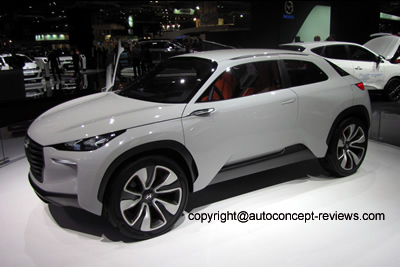
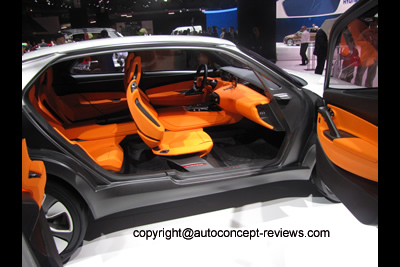
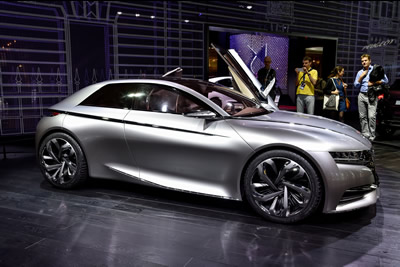
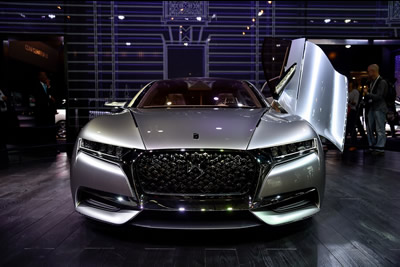
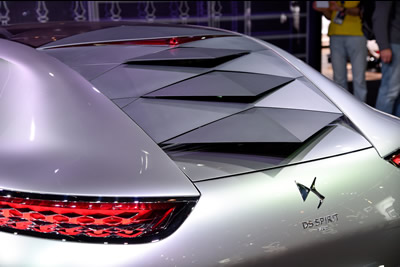
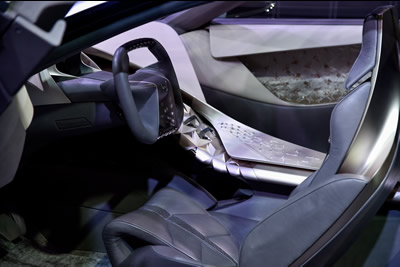
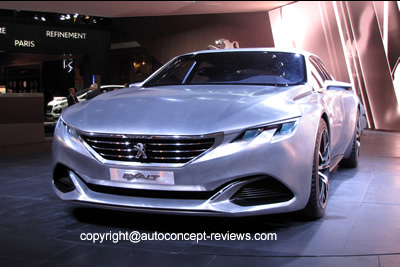
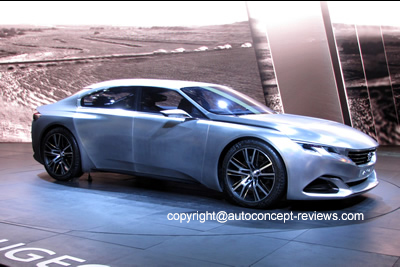
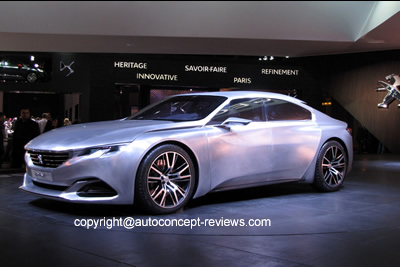
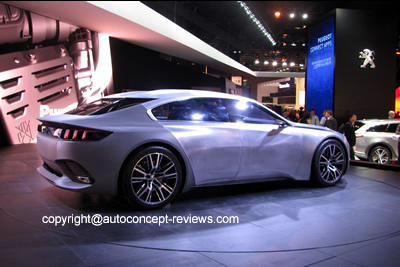
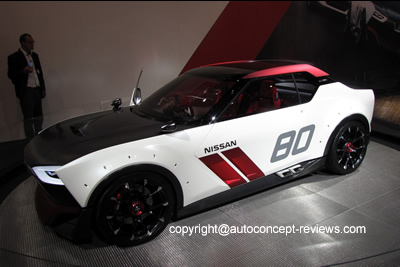
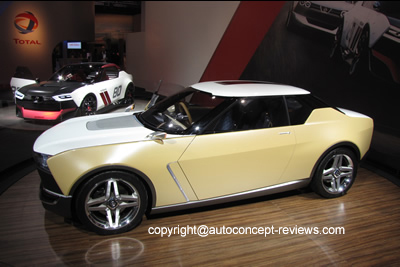
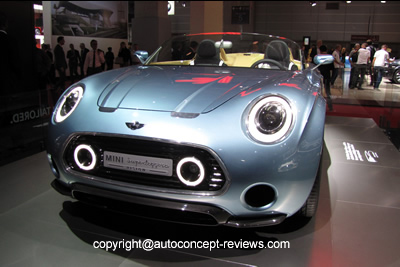
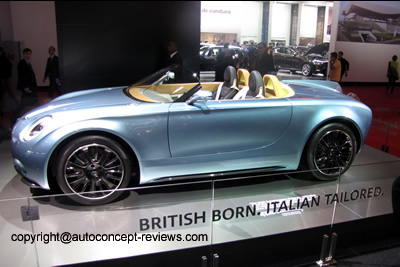
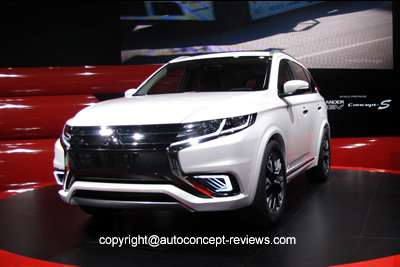
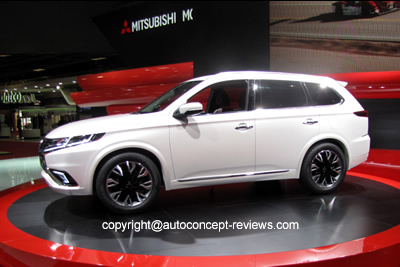
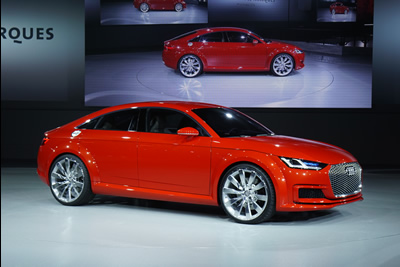
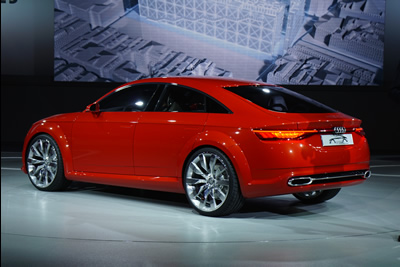








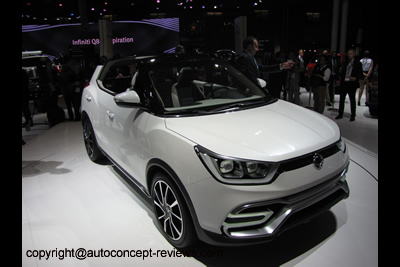
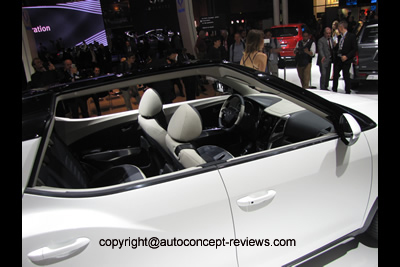
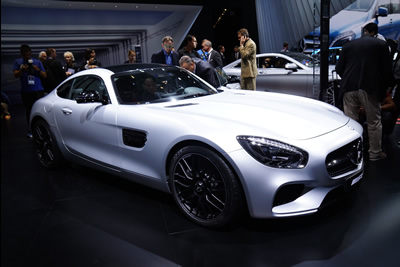
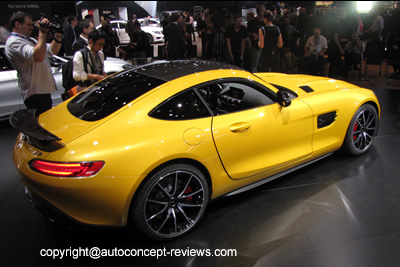
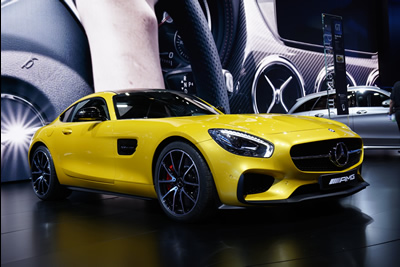
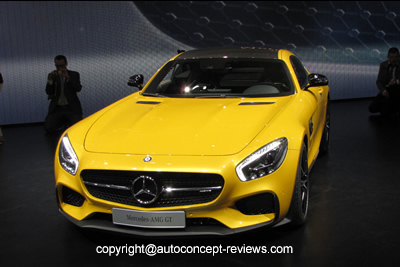
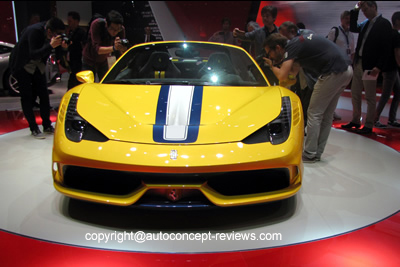
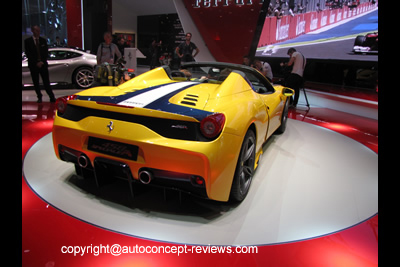
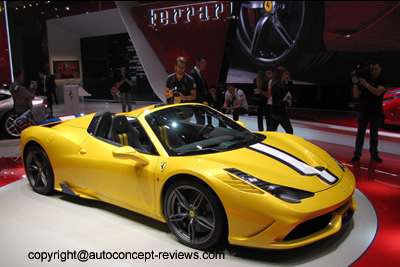
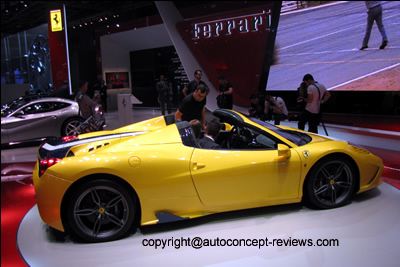

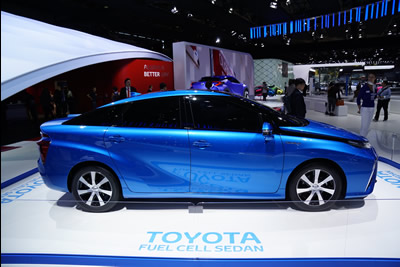
.jpg)
